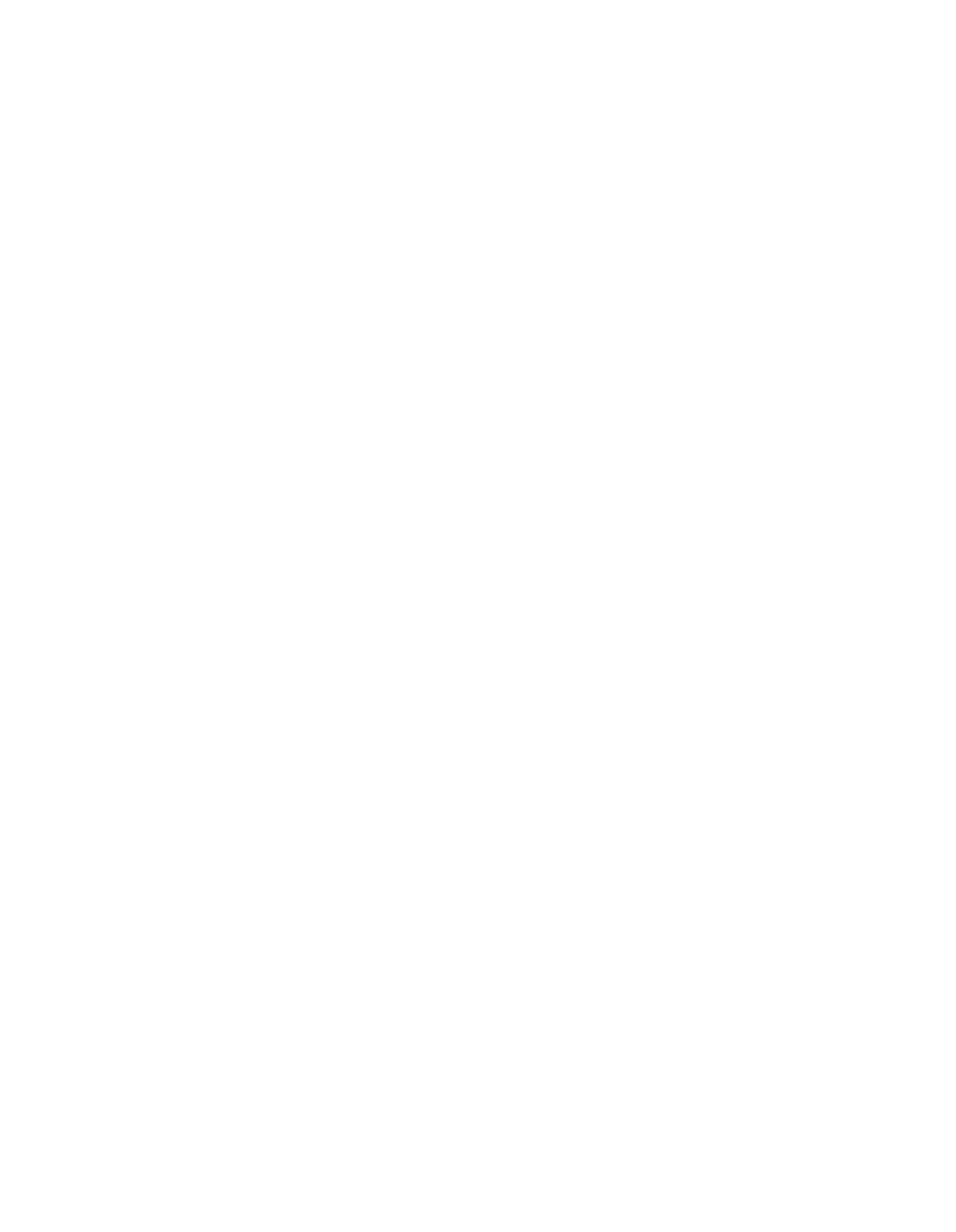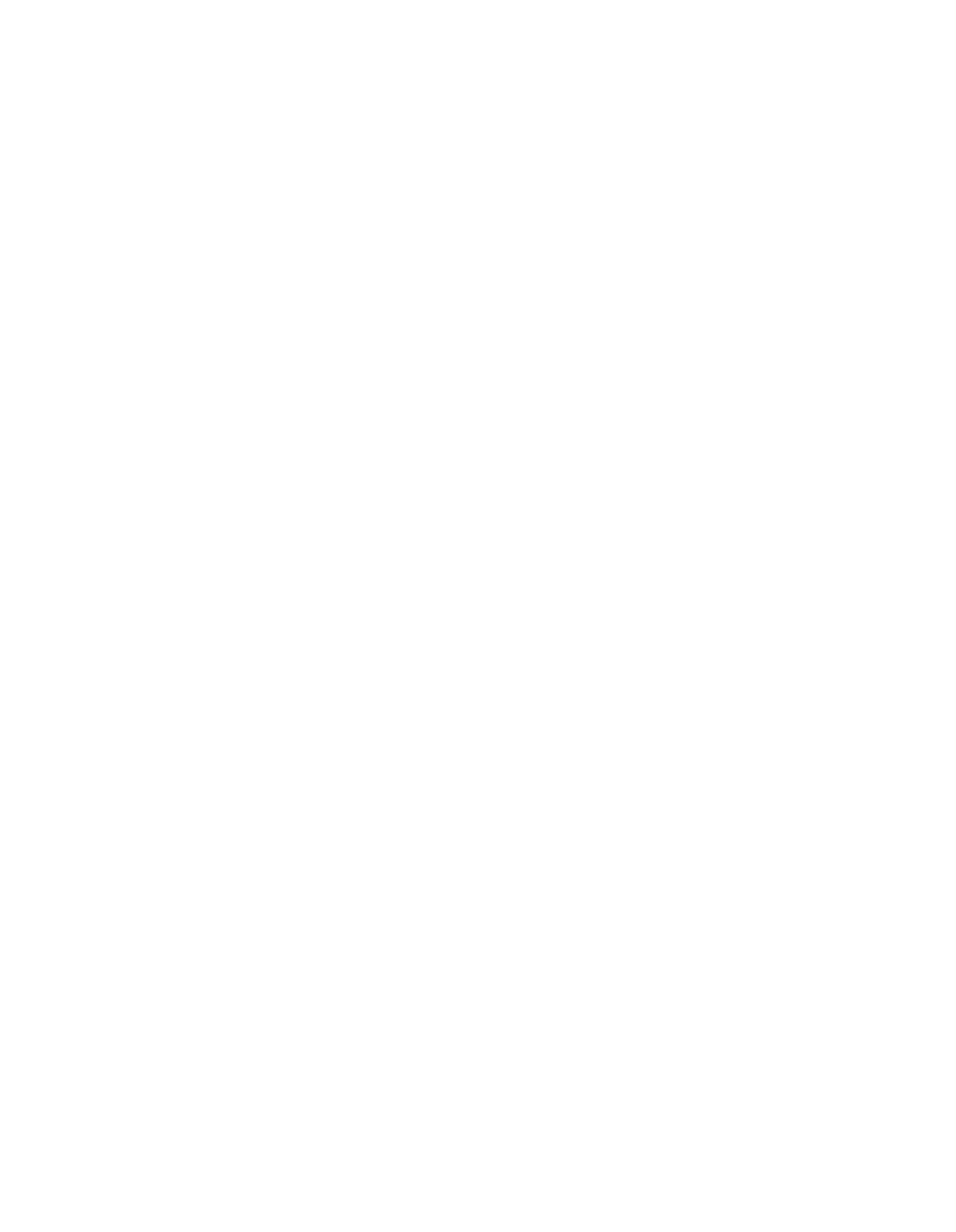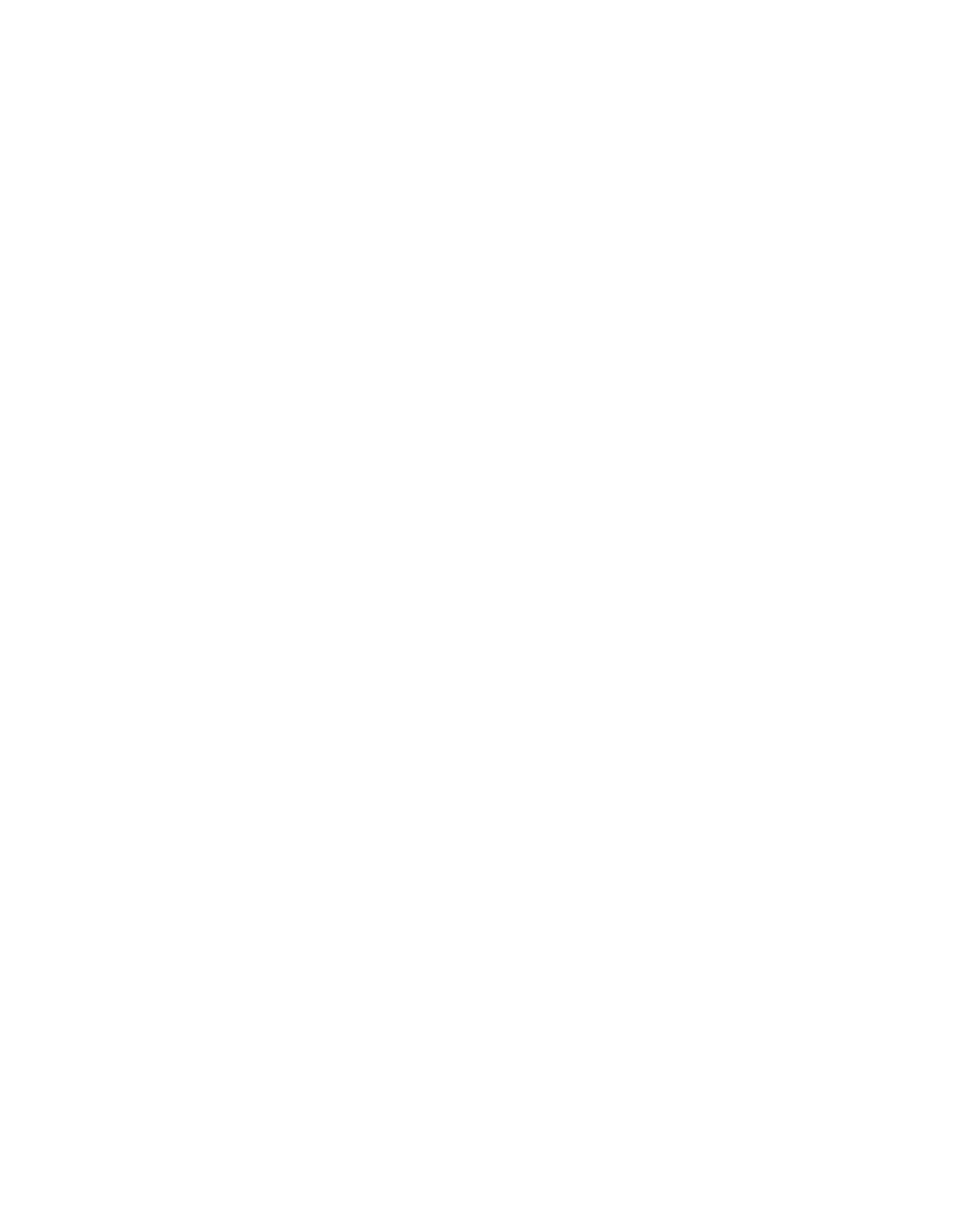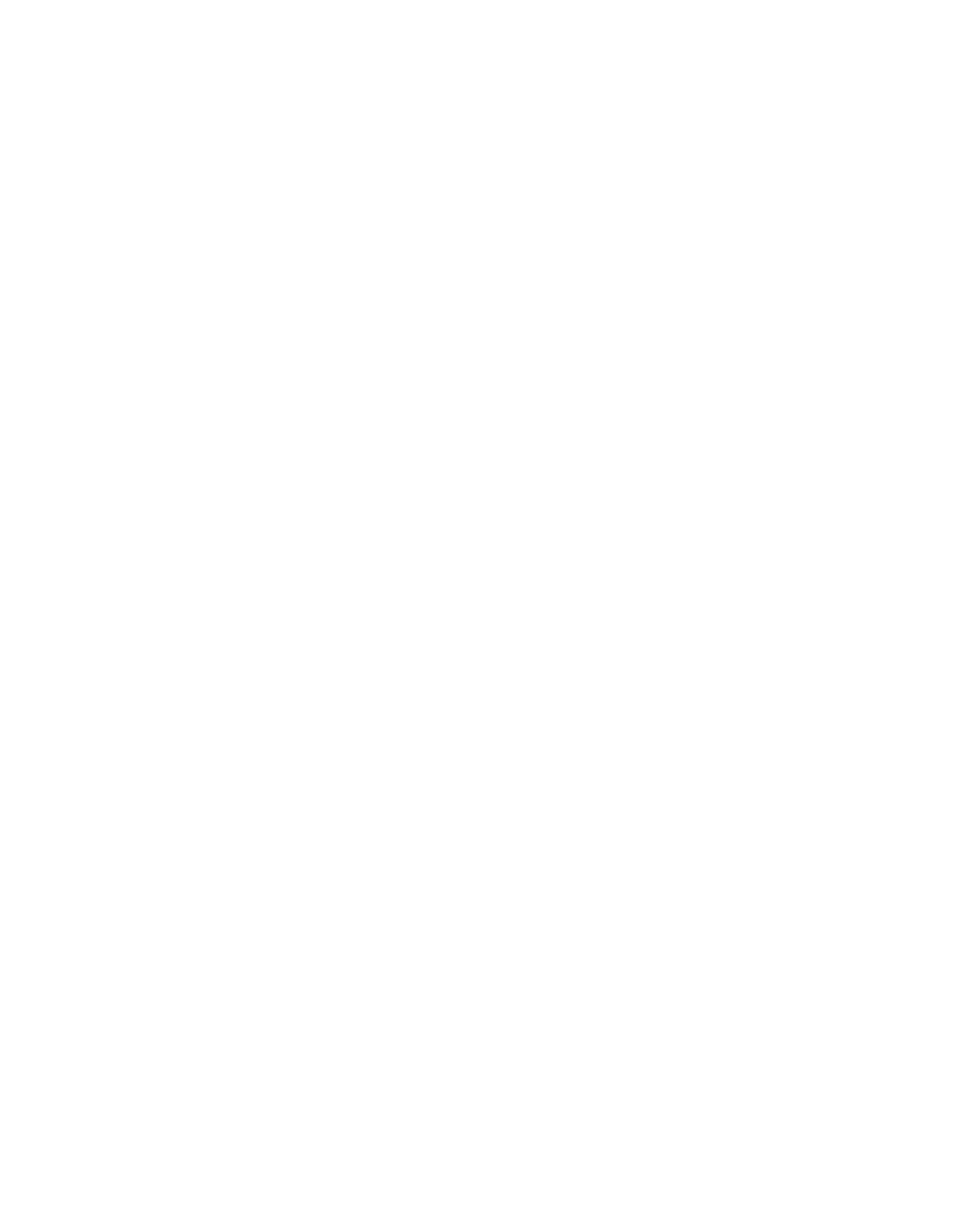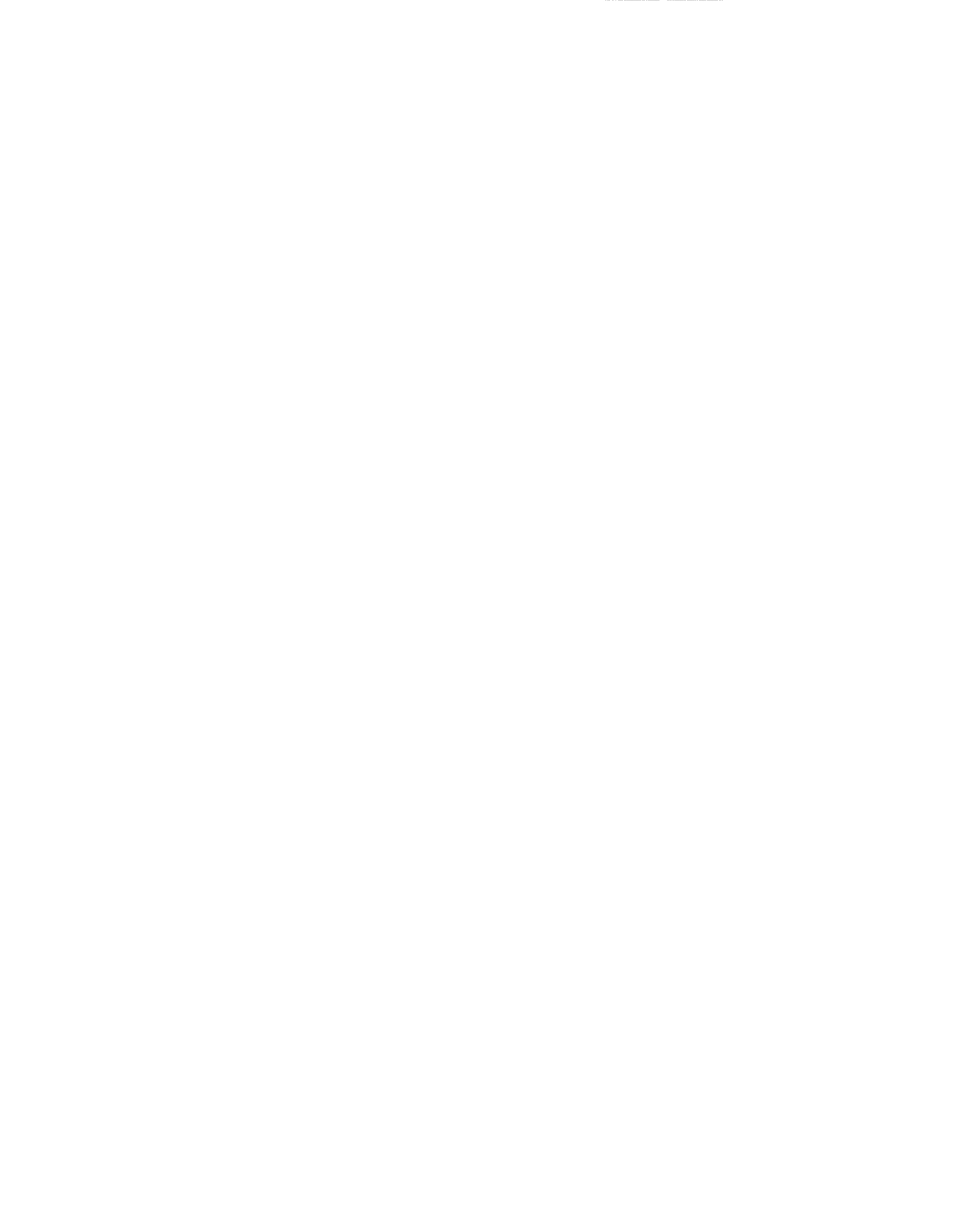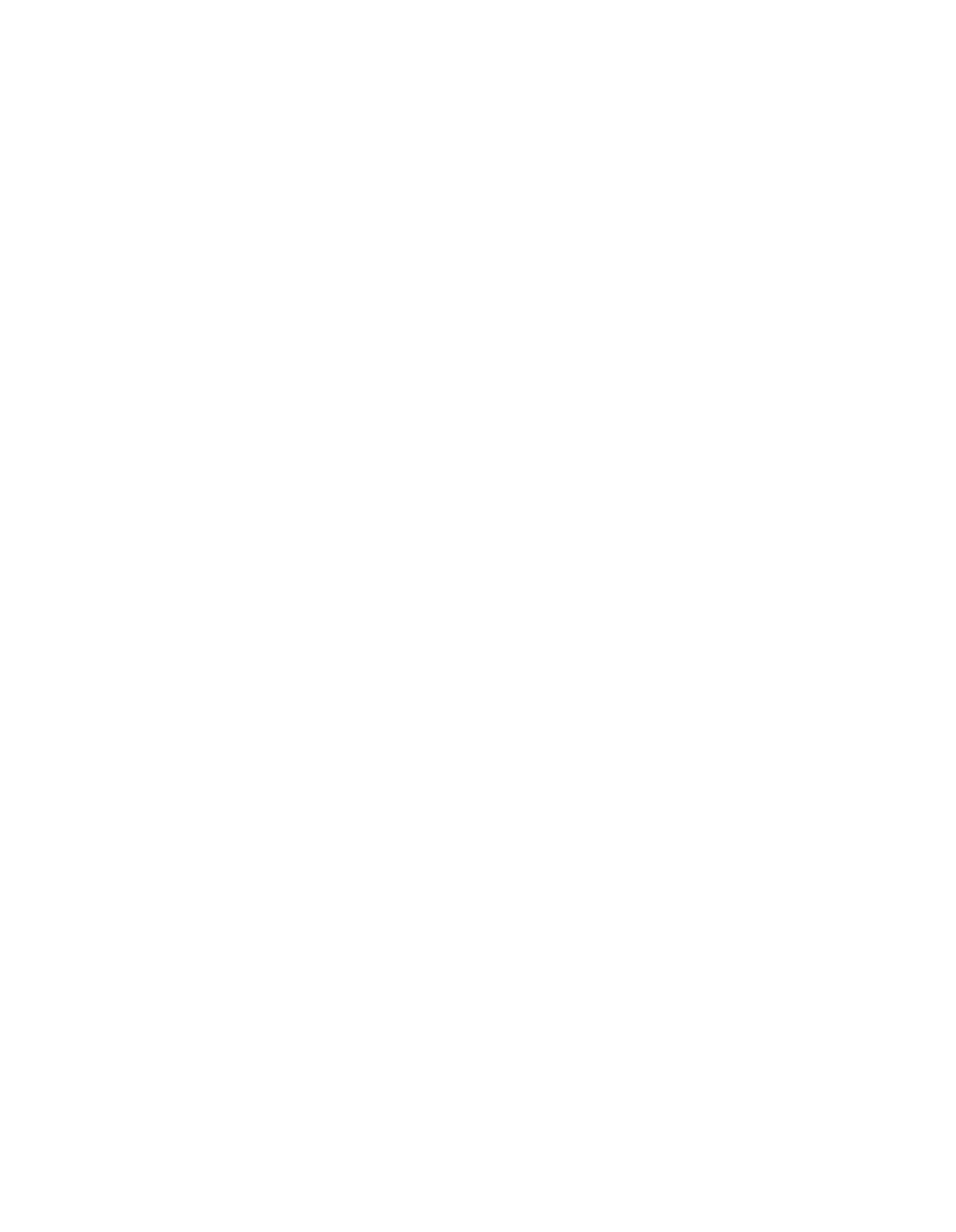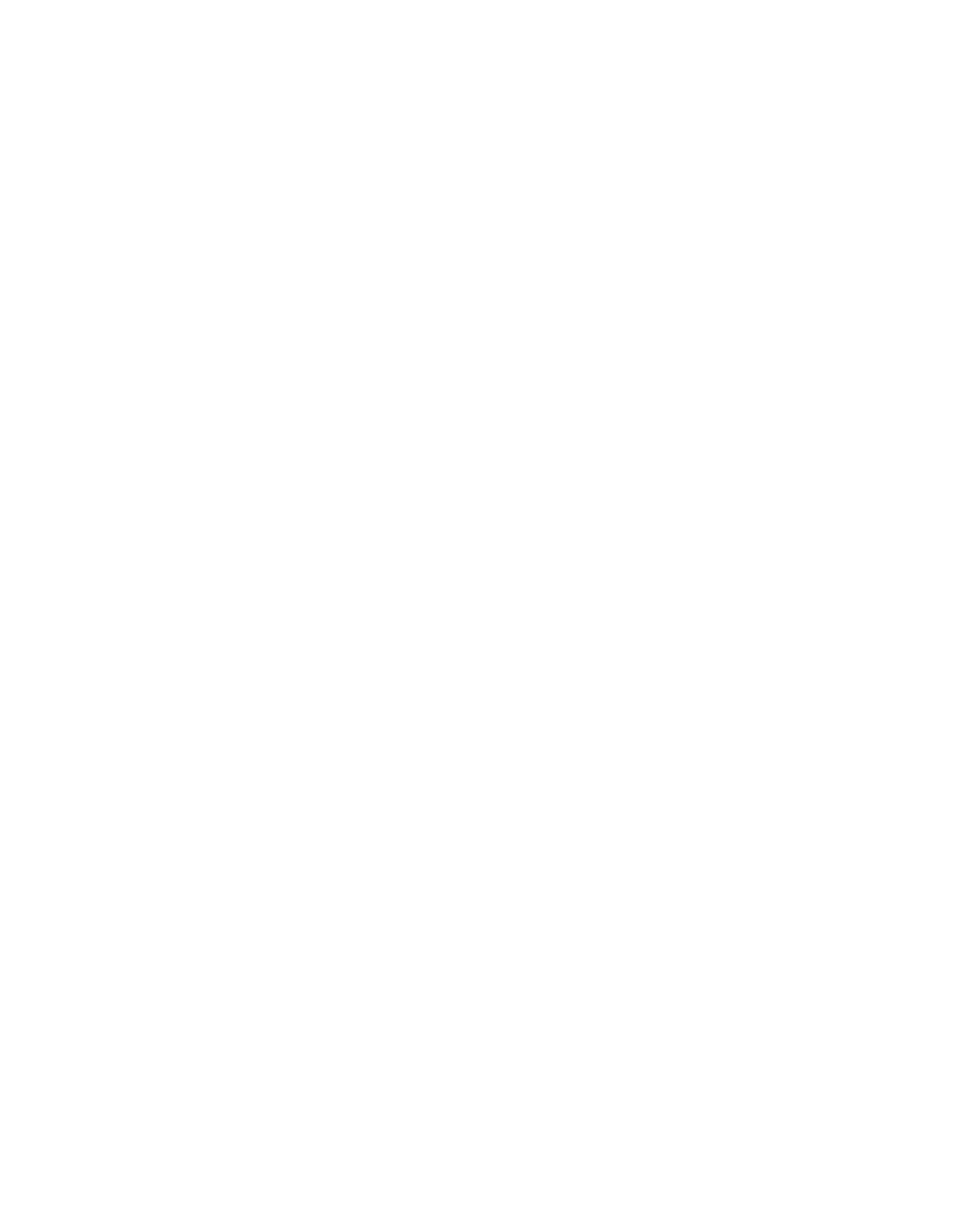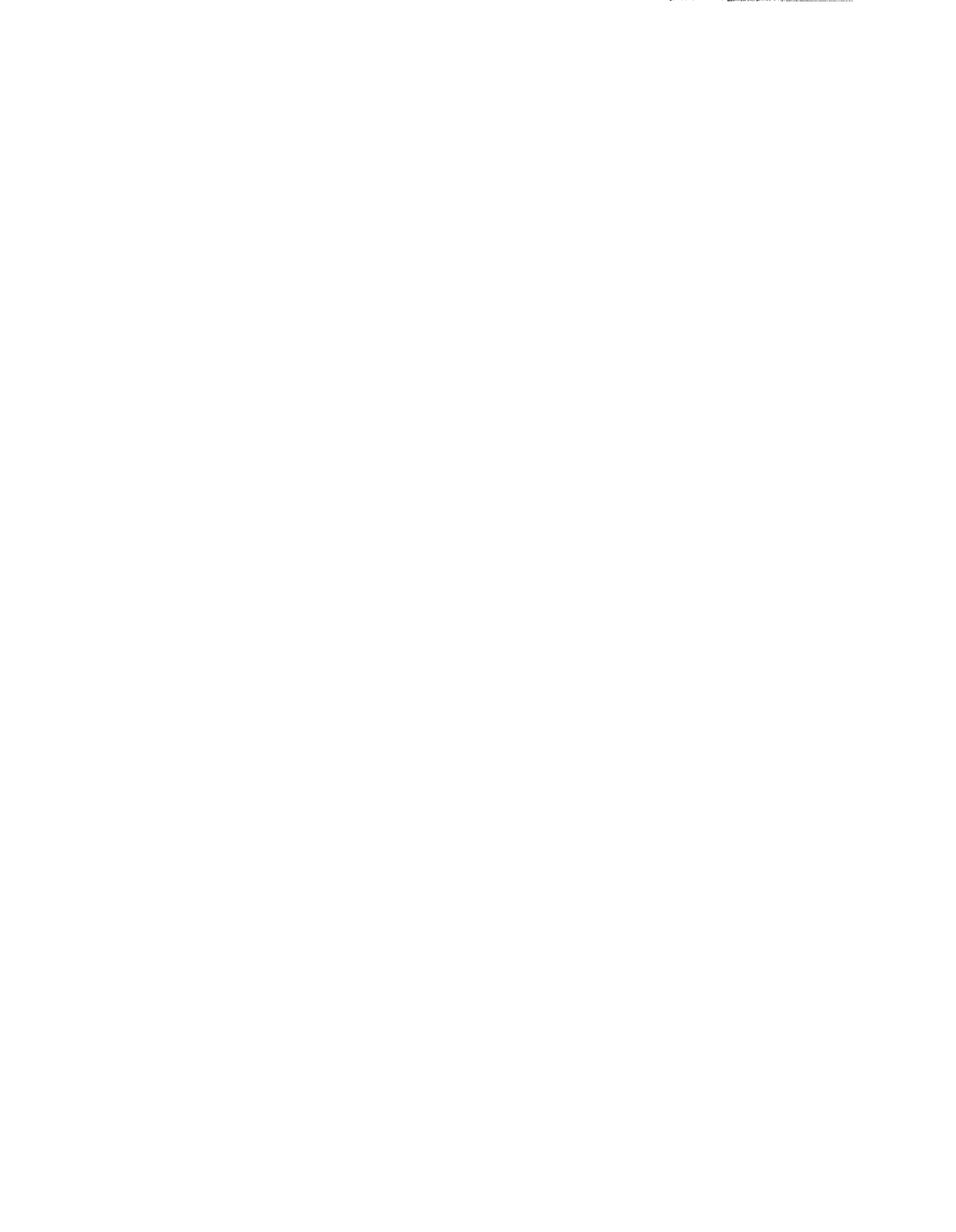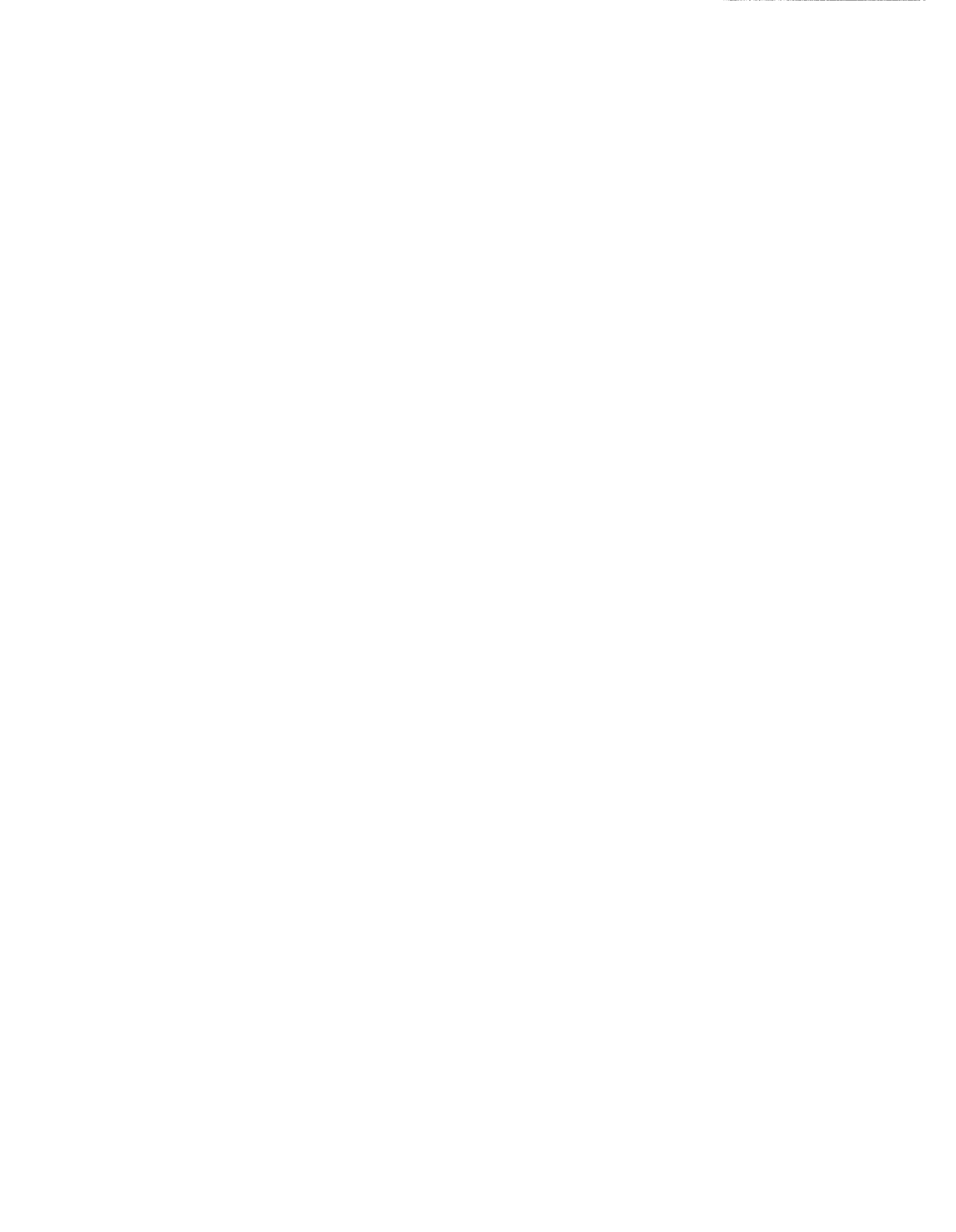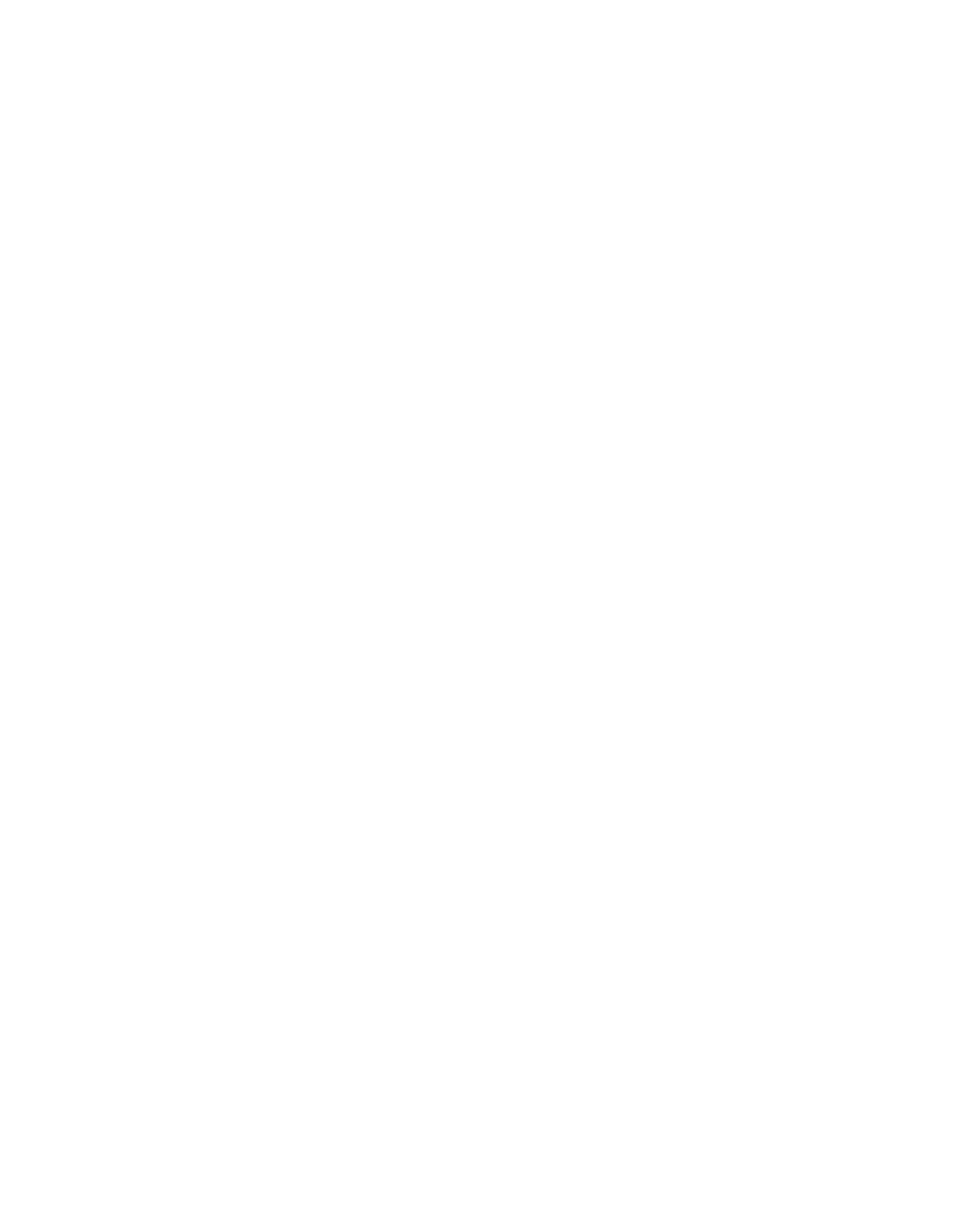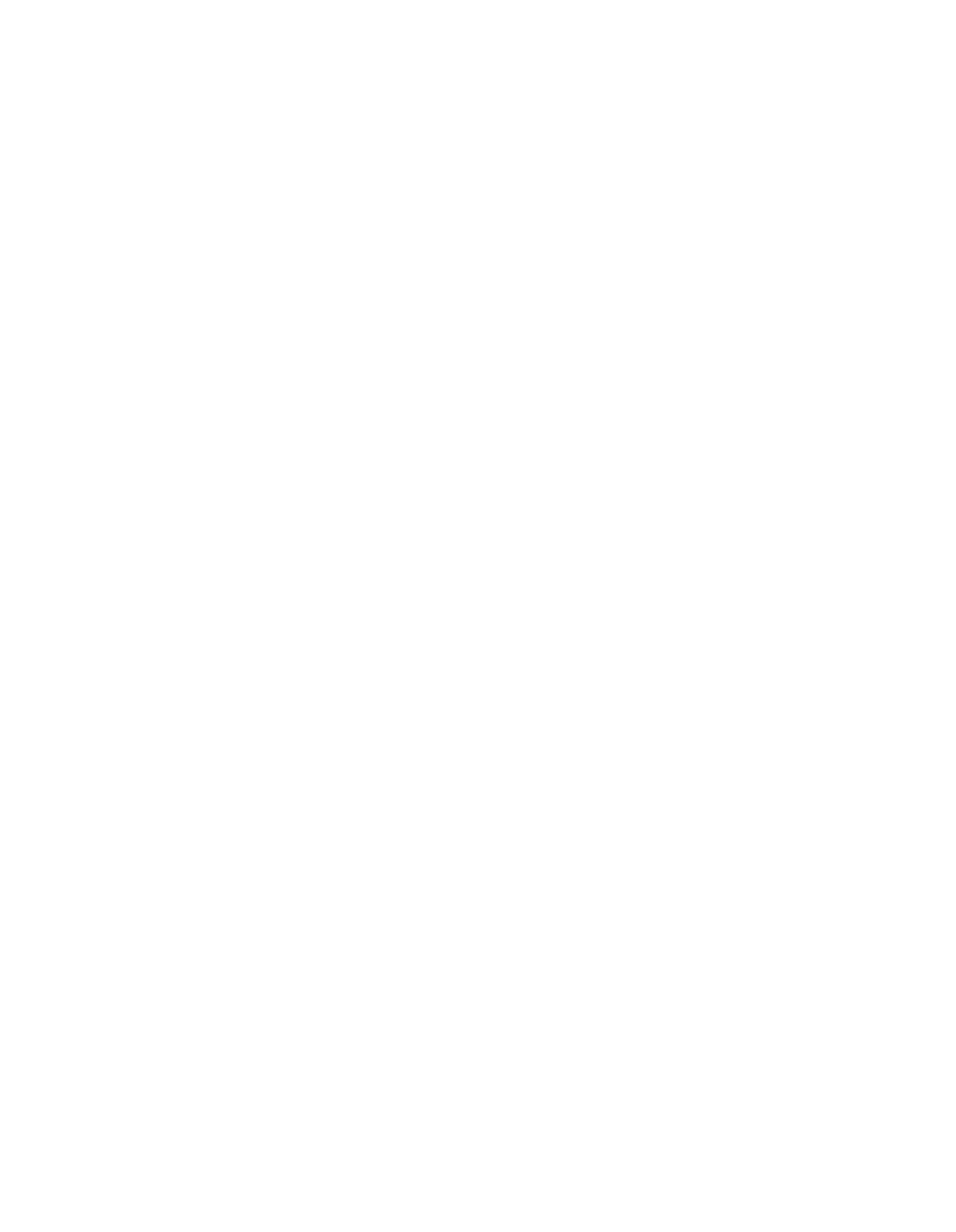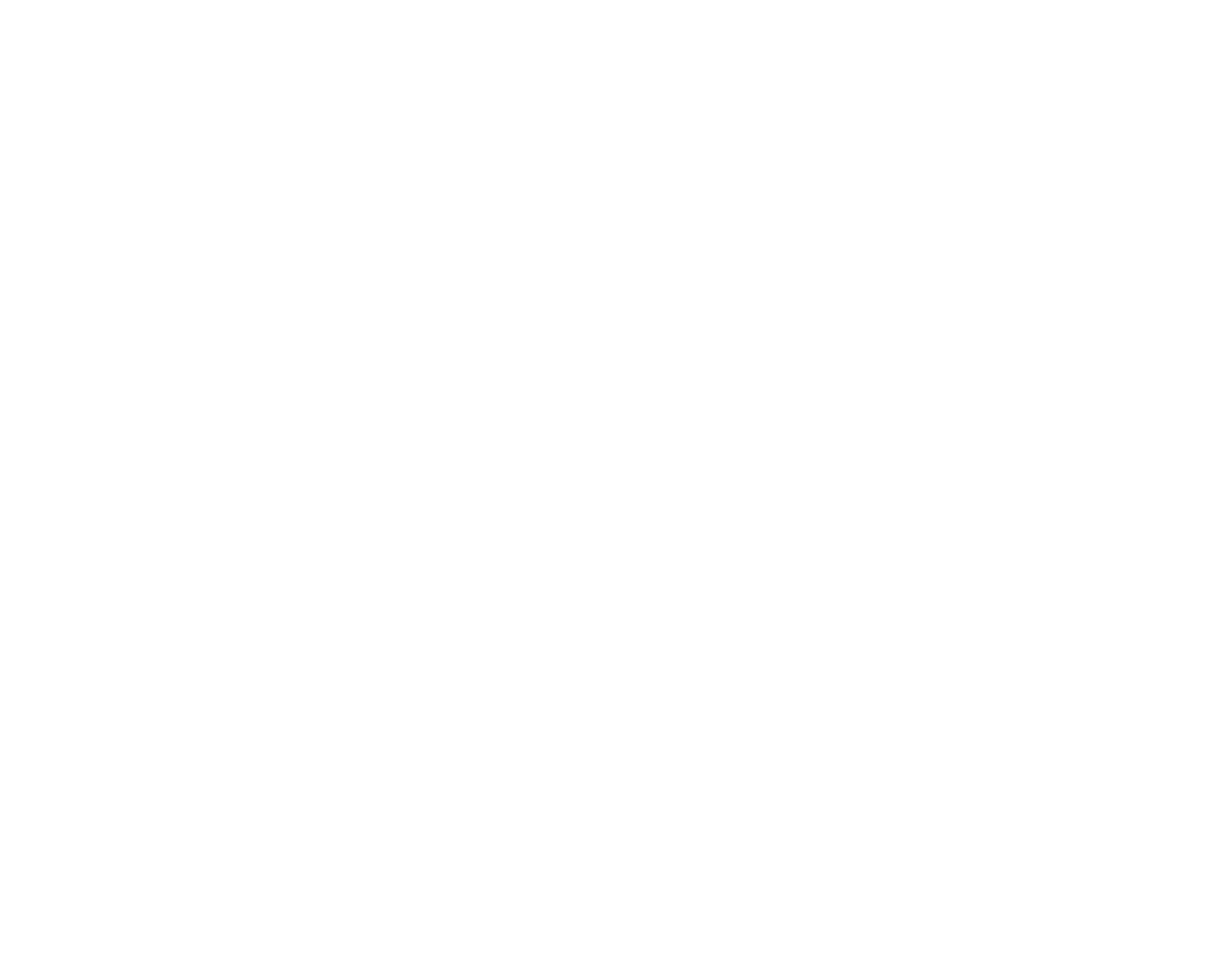BEFORE THE
~OLBOAR~R2
2
2003
IN
THE MATTER OF:
STATE OF
ILLIINOIS
01/utIon control Board
PETITION
OF
AS
xx-xxx
ARGONNE NATIONAL LABORATORY
(Adjusted
Standard
-
X)
FOR AN ADJUSTED STANDARD
)
FROM 35
III. Adm. Code
218.182
)
NOTICE OF
FILING
PLEASE TAKE
NOTICE that
I
have today filed with the
Office of the
Clerk of
the
Pollution
Control
Board
the
PETITION
OF
ARGONNE
NATIONAL
LABORATORY
FOR
AN ADJUSTED
STANDARD
FROM
35
Ill.
Adm.
Code
218.182,
a copy of which
is
herewith served
upon you.
PLEASE TAKE NOTICE ALSO that the above-referenced PETITION has been
printed on
recycled
paper meeting
the terms of The Pollution
Control
Board’s
regulation
on that subject.
For THE
UNIVERSITY OF CHICAGO:
William
D.
Luck
Assistant General Counsel
Argonne National Laboratory
Operated by The University of Chicago
For the
U.S. Department of Energy
9700 S. Cass Avenue
Argonne,
Illinois 60439
(630) 252-7300
2~~v3
Date
)
)
)
)
~nrii~
h
Il
1\
~ECEjV~j~
I~\
CLERrcS
~
CONTROL BOARD
~PR
2
2
2003
STATE OF /LLINOIS
IN THE
MATTER OF:
)
Pollutjo~Control Board
PETITION
OF
)
AS xx-xxx
ARGONNE NATIONAL LABORATORY
)
(Adjusted
Standard
-
X)
FOR AN ADJUSTED STANDARD
)
FROM 35
III. Adm. Code
218.182
)
APPEARANCE
I
hereby
file
my
appearance
in
this
proceeding,
on
behalf
of
the
U.S.
Department of Energy.
For U.S. DEPARTMENT OF ENERGY:
L~
k)a~LL
Oloria Walach
Counsel
U..S.
Department of Energy
9800 S. Cass Avenue
Argonne,
Illinois 60439
(630) 252-2036
i~/
7—L~
Date
RECE1~VED
CLERR’S ~
1\PR
2
2
2003
BEFORE TH~
BOARD
STATE
OF ILUNOIS
IN
THE MATTER OF:
)
Pollution
Control Board
PETITION OF
)
AS xx-xxx
ARGONNE NATIONAL LABORATORY
)
(Adjusted Standard
-
X)
FOR AN ADJUSTED STANDARD
)
FROM 35
Ill. Adm.
Code 218.182
)
APPEARANCE
I
hereby file my appearance
in
this proceeding,
on behalf of The
University of
Chicago.
For THE
UNIVERSITY OF CHICAGO:
William
D.
Luck
Assistant General Counsel
Argonne National Laboratory
Operated by The University of Chicago
For the
U.S.
Department of Energy
9700 S. Cass Avenue
Argonne, Illinois 60439
(630) 252-7300
—
Date
(~fl~rZ~r\
0
R
RECE~VE~
~j ~0j
liii ~ II I~\
ii
/A\
II
CLER!’s
~
BEFORE
T~L~
~
~j~~CONTROL
BOARD
~4PR
22
2003
IN
THE MATTER OF:
)
STATE
OF ILLINOIS
)
Pollution
Control Board
PETITION OF
)
AS xx-xxx
ARGONNE NATIONAL LABORATORY
)
(Adjusted Standard
-
X)
FOR AN ADJUSTED STANDARD
)
FROM
35
III. Adm. Code
218.182
)
CERTIFICATE OF SERVICE
I,
the undersigned, certify that
I
have served the original and nine (9) duplicate
copies of the attached PETITION OF ARGONNE NATIONAL LABORATORY
FOR AN ADJUSTED STANDARD FROM
35111. Adm.
Code 218.182, upon the
following person, by depositing
it with
FEDERAL EXPRESS on this date:
Pollution Control Board
Attention: Clerk
100 W. Randolph Street
James R.
Thompson Center
Suite 11-500
Chicago,
Illinois 60601-3218
I further certify that I have served one (1) copy of the attached PETITION OF
ARGONNE NATIONAL LABORATORY FOR AN ADJUSTED STANDARD
FROM 35
Ill. Adm. Code
218.182 upon the following person, by depositing it
with FEDERAL EXPRESS on this date:
Rachel Doctors
Division of Legal Counsel
Illinois Environmental Protection Agency
1021 North Grand Avenue East
P.O.
Box 19276
Springfield,
Illinois 62794-9276
For THE UNIVERSITYOF CHICAGO:
William D.
Luck
Assistant General Counsel
Argonne National Laboratory
Operated
by The University of Chicago
For the
U.S. Department of Energy
9700 S. Cass Avenue
Argonne, Illinois 60439
(630) 252-7300
Date
IV E
—
nr~,
~
/~ ~
CL~RK’SOFP/CE
BEFORE THE IL~fr1Ic~
~L1
1J~\Of~fJTROL
BOARD
IN THE
MATTER OF:
Li
~ ~
L~
~j
~iLn~\
L~j
~
3
STATE OF ILLINOIS
o
u
on
ontrolB
d
PETITION OF
)
AS xx-xxx
00~
ARGONNE NATIONAL LABORATORY
)
(Adjusted Standard
-
X)
FOR AN ADJUSTED STANDARD
)
FROM
35
Ill.
Adm. Code
218.182
)
Pursuant
to
Section
28.1
of the
Illinois
Environmental
Protection Act
and
35
III.
Adm.
Code
Part
104,
Subpart
D,
Argonne
National
Laboratory,
as
represented
by
the
United
States
Department
of
Energy
and
The
University
of
Chicago,
respectfully submits this petition for an
adjusted standard from
35
III. Adm.
Code
218.182.
Argonne
National
Laboratory
is
a
government-owned,
contractor-operated
facility,
owned
by the
United States
Department of Energy
and operated
by The
University
of
Chicago
under
a
Prime
Contract
between
the
parties.
Argonne
National
Laboratory occupies
a
1,500-acre site
in
DuPage County, Illinois,
and
is
located
about 27
miles
southwest of downtown
Chicago.
It
is
north of the
Des
Plaines
River valley,
south of Interstate
Highway 55,
west of Illinois Highway
83,
and east of Lemont Road.
Argonne
National
Laboratory
conducts
broad
programs
of
fundamental
and
applied
research
in
the
physical,
biomedical,
and
environmental
sciences
and
serves
as
major
center
of
energy
research
and
development.
About
120
buildings
are located
on the
site,
30 of which
house either administrative
offices
or
major
research
programs.
The
facility
is
surrounded
by
the
2,240-acre
Waterfall
Glen
Forest
Preserve,
owned
by the
DuPage
County
Forest
Preserve
District.
The information
in this petition
is presented
in sections organized
in conformance
with
the petition content requirements of 35
III. Adm. Code
104.406,
as follows:
a.
Description
Of
Reçjulation
From
Which
Adjusted
Standard
Is
Souciht.
Petitioner
Argonne
National
Laboratory
(Argonne)
seeks
an
adjusted
standard from
35
III. Adm. Code
218.182,
Cold Cleaning, effective date June
9,
1997
(hereafter
also
referred
to
in
this
petition
as
the
regulation),
a
regulation
of
general
applicability,
which
specifies,
among
other
requirements,
that
after
March
15,
2001,
no
person
in
the
Chicago
ozone
non-attainment area
may
operate
a
cold
cleaning
degreaser with
a solvent
vapor
pressure
which
exceeds
1.0
mm
Hg
(0.019
psi)
measured
at 20°C
(68°F).
Petitioner Argonne
seeks
an
adjusted
standard to exempt
it from
otherwise
applicable
requirements
of
the
regulation,
including
the
vapor
pressure
requirements
of
Section
218.182(c),
as
well
as
the
associated
equipment
requirements
of Section 218.182(b),
and
the
recordkeeping
requirements of
Section
218.182(d),
for
.those
cold
cleaning
applications
involving
the
preparation
of sample
material
and
associated
apparatus used
for
research
and
development’testing
and
analysis
activities
where
(1) the
research and
development-related
cold
cleaning
activities
include,
but
are
not
limited
to,
washing and
rinsing
slides, drying
glassware,
sample
preparation, specimen
cleaning,
gel
stain/de-staining,
membrane
rinsing,
and
the cleaning
of small
parts and equipment and the preparation of sample materials and associated
apparatus for
testing
and
(2) solvents
meeting the vapor pressure limit of the
cited
regulation
cannot
be
used
without
compromising
the
quality
of
the
equipment being used or the validity of research results.
b.
Reason
For Promulgation
Of Regulation.
The
regulation
derives from
requirements of the Clean Air Act (42
USC 7401
et seq.),
although
it
is
not specifically directed
by that statute.
Because
the
Chicago
metropolitan
region was
designated
an
ozone
non-attainment
area
under
the
1990
amendments
to
the
Clean Air
Act,
Illinois
has
instituted
a
number of measures, including
the
regulation
at issue, as part of its
program
to bring the
region into attainment as required by the Clean Air Act.
On
March
4,
1997,
a
representative of the
Illinois
Environmental
Protection
Agency
(IEPA),
in
presenting to the
Pollution Control Board the
proposal for
the
rulemaking
that
resulted
in
the
regulation
at
issue,
declared
that
“the
rulemaking
is
being
submitted to the
Illinois
Pollution
Control
Board to ratify
Illinois’
commitment
under the
Clean
Air Act to
reduce
emissions of volatile
organic material
by three
percent each
year from
1990
baseline
levels
until
attainment is reached.” (Docket R97-24 (Rulemaking), Transcript at Page
10)
The
rulemaking record makes
clear that while the rate of progress provisions
are mandated by the Clean Air Act, the
regulation
itself is
not.
Modeled after
a
similar
State
of
Maryland
provision,
the
regulation
was
designed
as
a
means to
achieve the
rate of progress
being
sought,
but neither
its
subject
matter
nor
its
terms
are
required
by
the
U.S.
Environmental
Protection
Agency.
c.
Justification For Adjusted Standard Specified In The Regulation
(Or Statement That No Justification
Is
Specified).
The
regulation
does
not
specify
any
level
of justification
for
obtaining
an
adjusted
standard.
In
such
a circumstance,
35
Ill.
Adm.
Code
104.406,
the
regulation
that sets
forth
the
requirements
for the
contents
of a
petition for
adjusted standard,
in Paragraph
(c)
directs one to 35
III. Adm.
Code
104.426
for the
applicable justification requirements.
Specifically,
Section
104.426(a)
addresses the
showing
required
for
a
petitioner to
meet the
burden
of proof
to
justify
an
adjusted
standard
consistent
with
Section
28.1
of
the
Illinois
Environmental
Protection Act.
The four factors
set forth
in
35
III. Adm. Code
104.426(a) are discussed
in Section
h. of this petition.
2
d.
Description
Of
Nature
Of
Petitioner’s
Activity
That
Is
The
Subiect
Of
The
Proposed Adjusted Standard.
Argonne
National
Laboratory,
9700
S.
Cass
Avenue,
Argonne,
Illinois,
60439,
is
a United States
Government-owned,
contractor-operated
research
and
development
facility
located
on
a
1,500
acre
site
in
DuPage
County,
Illinois, approximately 27 miles’southwest of downtown Chicago and 24 miles
due west of Lake Michigan.
The facility
is surrounded
by the 2,240 acre Waterfall Glen
Forest Preserve,
owned
by
the
DuPage
County
Forest
Preserve
District.
Much
of
the
Waterfall Glen Forest Preserve was
part of the Argonne site until 1973, when
it
was
deeded
to the
DuPage
County
Forest
Preserve
District
for use
as
a
public
recreational
area,
nature
preserve,
and
demonstration
forest.
The
Laboratory
is
operated for
the
United
States
Department of
Energy
by The
University of Chicago, under Prime Contract
No. W-31-109-ENG-38.
The
University
of
Chicago
has
been
the
management
and
operating
contractor of Argonne National Laboratory from
its
inception
at
its current site
in
1946,
and prior
to that was
the contractor with
the
Manhattan
District for
the
project
at
the
University
campus during
World War
II
that
included
the
Fermi
experiment,
conducted
under
the
stands
of
the
football
field,
that
ushered
in
the
nuclear
age.
Today
Argonne
is
a
multiprogram
basic
research and development laboratory employing
approximately 3,200 people
at the DuPage County,
Illinois
site
(and approximately 1,300 more at another
site near Idaho Falls,
Idaho).
Argonne
conducts
a
broad
program
of
research
in
the
basic
energy
and
related
sciences
(physical,
chemical,
material,
computer,
nuclear,
biomedical,
and
environmental)
and
serves
as
an
important
engineering
center for the
study of nuclear and
nonnuclear energy sources.
Other areas
of
research
are
basic
biological
research,
heavy-ion
research
into
the
properties of super-heavy elements, fundamental coal chemistry studies, the
immobilization
of
radioactive waste products for safe
disposal,
fundamental
studies
of advanced
computers, and the
development of chips for
the
rapid
assay
of
gene
composition.
Environmental
research
studies
include
the
biological
activity
of
mutagens
and
carcinogens,
characterization
and
monitoring of energy-related
pollutants,
and new technologies for cleaning
up
environmental contaminants.
Recent work at Argonne
also has focused
on
supporting
government
anti-terrorism
efforts
through
the
development
of
biological,
chemical, and nuclear detection systems.
Argonne’s
IEPA air pollution control
site identification
number
is 043802AAA.
The
site’s
major
source
of
emissions
is
the
Central
Heating
Plant
that
consists
of five
boilers.
Other
sources
of emissions
include
a
number
of
underground
gasoline
storage
tanks,
an
engine
test
facility,
bulking
operations of liquid wastes generated
by research
activities, and
a number of
diesel
generators.
The
site
applied
for
a
permit
pursuant to
Title V of the
3
Clean Air Act on
September
13,
1995;
the
Title V
permit (#95090195)
was
issued on April
3, 2001.
With
respect
to
cold
cleaning
at
Argonne,
many types
of
activities
are
in
compliance
with
the
vapor
pressure
limit
of
the
current
regulation.
For
example,
the
Laboratory
does
have
shops
that
perform
conventional
machining
operations.
For
these
activities,
Argonne
does
employ
cold
cleaning
solvents
that
meet
the
vapor
limitation
of
35
III.
Adm.
Code
218.182(c)(2)(B).
Other small parts degreasers also are operated around the
site
using
solvents that are
in compliance with
the regulation.
With
respect to
pollution
control,
all
of the
requirements of Section 218.182
are followed for
these types of operations.
However,
some
research
applications
involve
equipment
(e.g.,
x-ray
equipment,
vacuum
systems,
and
analytical
instrumentation
for
research
at
the
atomic
and
sub-atomic
levels)
that
requires
sample
surface
areas
completely free of any residual contamination.
This necessitates the
use of a
number
of
common
laboratory
solvents,
such
as
methanol,
ethanol,
isopropanol,
hexane,
and
toluene,
all
of
which
have
vapor
pressures
that
exceed the
limitation
of the
regulation.
For
a
number
of reasons,
the
cold
cleaning
activities
associated
with
these
research
applications
cannot
be
accomplished
in
such
a
manner
as
to
take
advantage
of
any
existing
exemption from the
regulation.
With
respect
to
the
potential
use
of
wipe
cleaning,
which
specifically
is
excluded
from
the
definition of
cold
cleaning
in
35
Ill.
Adm.
Code
Part
211
(and
which definition
is made applicable to
35
III. Adm.
Code
Part 218 by 35
Ill.
Adm.
Code
218.104),
in
connection
with
sample
preparation,
in
many
cases
this approach
cannot be
used
in sample preparation
applications
due
to problems resulting
from
low levels of particulate
residue, which
could
have
an
adverse
effect
on
analytical
results.
For
example,
the
preparation
of
various
types
of
metal
samples
prior
to
analysis
with
electronic
instrumentation often requires cutting and cleaning.
In some cases methanol
or
isopropanol
is
used
to
clean
the
cutting
blade
during
cutting
operations.
Various
types
of
alcohol
or
hexane
also
are
used
to
decontaminate
radiological
samples
and
to
remove
lubricants
from
sample
materials
after
grinding
and
polishing.
Methanol
and
ethanol
also
are
used
to
clean
samples
in preparation for x-ray scattering measurements.
The method used
for
sample
cutting
and
sample
preparation
can
be
either
spraying
or
immersion
in
milliliter
volumes
of
solvent.
It
is
noted
that
the
analytical
activity
itself
is
categorized
in
the
Argonne
Title
V
permit
as
bench
scale
research which
is considered to be an insignificant activity.
Also with respect to the
potential use of wipe cleaning
in sample preparation,
wipe
cleaning
often
cannot
be
used
to
clean
small
parts
and
equipment
associated
with
the preparation of sample materials for testing
and analysis,
again
because
of the
problem of contamination
caused by residue from
the
wipe
cleaning
process.
For example,
the experimental
use of a number
of
particle
accelerators,
such
as
the
Argonne
Tandem
Linac
Accelerator
4
System
(ATLAS),
Intense Pulsed
Neutron Source
(IPNS), and the Advanced
Photon
Source
(APS),
requires that such
items as beam
line conduits (which
are
essentially metal tubes)
and associated
vacuum pumping
equipment be
cleaned so that a state of high vacuum can be maintained.
Solvents that can
evaporate
with
zero
residue
must
be
employed
on
such
systems
because
any
residual contamination can
cause out-gassing that
can destroy vacuum
conditions
and
thereby
affect
research
results.
The
methods
used
for
preparation
of
vacuum
equipment
can
include
immersion,
brushing,
and
spraying.
In
other
instances
wipe
cleaning
of
parts
or
equipment
is
not
feasible
because
the
presence
of
small
confined
areas
or
delicate
parts
precludes that approach.
With
respect to
the
potential
use of the
Section
218.182(f)
exemption
from
the
Section
218.182
requirements
for
the
cold
cleaning
of
electronic
components, although certain of the equipment employed
in
the Laboratory’s
testing
and
analysis
activities
would
be
considered
to
be
electronic
components,
that
is
not true
of all
parts
and
equipment associated
with
the
testing and analysis process,
and certainly the
research samples themselves
cannot be considered as electronic components.
Attached as Exhibit
2
is
a
summary
by building of Argonne
research-related
cold
cleaning
activities,
involving
preparation
of
sample
materials
and
associated apparatus for testing
and analysis,
which would
be encompassed
by the requested adjusted standard.
e.
Efforts
Necessary
For
Compliance
With
The
Regulation
Of
General
Applicability.
Argonne
has
made
a concerted
effort
since
1998 to
identify
and
substitute
replacement
solvents
that would
comply
with
the
Section
218.182(c)
vapor
pressure standard for the entire range of its
activities; however, there remain
cases where
acceptable substitutes
have
not
been
found.
Organic solvent
substitutes with
an acceptable vapor pressure
can leave
residues which can
compromise
the
integrity
of
fabricated
items
and
the
quality
of
research
results.
This
is
particularly
true
for
materials
being
handled
in
a
vacuum
environment.
In addition, wiping is not an option
because of the
residue that
would
be
left
by
the
wiping
cloth
or
other
material.
As
a
consequence,
meeting
the
regulatory requirements for
low vapor
pressure
solvents
would
jeopardize a
number of particular Argonne
research
programs,
and
thereby,
the
research and development mission ofthe Laboratory.
Acetone,
which
is
a
solvent
that
is
not
categorized
as
a
volatile
organic
material
due to
its
negligible
photochemical
activity,
has
been
used
as
an
acceptable substitute in some applications.
However,
the very low flashpoint
of acetone
makes this solvent
a
potential fire
hazard, and for safety reasons
it cannot be substituted
in
all
cold cleaning applications.
Because the
issue
of compliance
with
the current Section
218.182(c)
vapor
pressure
standard
is
a
quality
control
issue
where
there
are
no
feasible
5
alternatives,
rather than
an issue of the cost of compliance, this petition does
not discuss compliance alternatives or their corresponding
costs.
The
difficulty
of
complying
with
the
equipment
requirements
of
Section
218.182(b)
in
the
case
of cold
cleaning
involving
research
samples
is
that
cold
cleaning
of
research
samples
is
not conducted
in equipment
designed
for degreasing operations.
For example,
small laboratory beakers containing
milliliter volumes
of solvent
often
are
employed,
and
they do
not
meet
the
equipment
requirements
specified
in
Section
218.182(b).
Requirements
such
as
a
permanent
conspicuous
label,
as
set
forth
in
Section
218.182(b)(4),
would
serve
little
purpose
for
a
beaker
used
only
for
short
periods
of time
for
sample
cleaning
and
then
subsequently
used
in
other
laboratory activities.
With
respect
to
the
recordkeeping
requirements
in
Section
218.182(d),
Argonne
does
track
chemical
usage
on
a
sitewide
basis
using
a
computerized
database known as the Chemical Management System (CMS).
The
CMS
can
indirectly track
by Chemical
Abstract
Service
(CAS)
number
the
types
of
laboratory
solvents
used
in
research-related
cold
cleaning
activities.
However, the
CMS tracks
total usage,
rather than
usage by specific activity.
For example,
a one
liter bottle of isopropanol
may have
a total annual
usage
of
600
milliliters,
which
could
include
a
variety
of
research
applications
including,
but
not limited to, cold cleaning.
To isolate the
usage dedicated to
research
sample
cold
cleaning
activities
would
necessitate
individual
researchers keeping
a
manual
record of amounts
used.
Argonne does not
believe
that
such
a
burdensome
procedure
would
be
practical,
due
to
the
large
number of ever-changing
research
activities,
many of which are bench
scale
in size
and ordinarily involve only small amounts of organic solvents.
f.
Description Of The Proposed Adiusted
Standard.
Argonne proposes the following adjusted standard,
to exempt the
Laboratory
from
the
applicable vapor pressure and
other associated
requirements of 35
Ill.
Adm.
Code 218.182 for the
specified
cold
cleaning activities conducted
at
the
Laboratory:
The
adjusted
standard
from
35
III.
Adm.
Code
218.182 applies to
Argonne
National
Laboratory,
a
research
laboratory
located
near
Waterfall
Glen
Forest
Preserve,
in
DuPage
County,
Illinois.
The
requirements
of
this
adjusted
standard
shall
apply
only
to
cold
cleaning
involving
the
preparation
of
sample
materials
and
associated
apparatus
used
for
research
and
development testing
and analysis
activities.
These activities are subject to the following
requirements.
(1)
The
research
and
development
related
cleaning
activities
include, but
are not
limited to,
washing and
rinsing slides, drying
6
glassware,
sample preparation,
specimen
cleaning,
gel stain/de-
staining,
membrane rinsing,
and
the
cleaning
of small
parts and
equipment
associated
with
the
preparation
of
sample
materials for testing
and analysis.
(2)
The
requirements of this
adjusted standard
do
not apply where
solvents
meeting
the
vapor pressure
limits of 35
Ill.
Adm.
Code
218.182
can
be
used
without
compromising
the
quality
of
the
equipment being used or the validity of research results.
As
indicated
in
Section
h. of this
petition,
Argonne
submits that
the
quality
control
issues
associated
with
its
research
and
development
cleaning
activities are highly similar to those associated with
the cleaning of electronic
components,
for which
35
III. Adm.
Code
218.182(f)
provides
an
exemption
from
the
otherwise
applicable vapor pressure
limit.
The
proposed
adjusted
standard
would
achieve
for
Argonne’s
research
and
development cleaning
activities a
result similar to what the
regulation
already provides for electronic
component cleaning activities.
g.
Quantitative
And
Qualitative
Description
Of
Impact
On
Environment,
Comparing
Compliance
With
Standard
To
Compliance
With
Proposed
Adjusted Standard.
While
it
obviously would
be
difficult to
measure,
as
indicated
in
Section
e.
above,
the
qualitative and
quantitative impact
on Argonne’s
work,
were
it
to
have
to comply with
the regulation’s vapor pressure limitation, nevertheless it
is clear that the
Laboratory
would experience
a significant inability to conduct
research
programs important to
its
research
and development mission.
The
anticipated impact on the environment, were the proposed adjusted standard
to
apply,
is
somewhat
difficult
to
quantify.
However,
for
the
reasons
discussed in
this
Section g.,
it
is believed that the emissions
associated
with
the
cold
cleaning
activities
under the
proposed
adjusted
standard would
be
minimal,
on the
order of no more than approximately one ton per year.
In
most individual applications,
the amount of solvent
not meeting the current
vapor pressure
limit that would be
used
under the circumstances set forth
in
Section
f.
of this petition would be a
small
amount.
Most often the amount of
solvent that would
be
employed
by Argonne’s
technically qualified
research
personnel,
to
be
utilized
to
prepare
samples
or
apparatus for research
and
development
purposes,
would
be
a
bench
scale
research
quantity,
ranging
from
a few milliliters up to a
liter.
As
a measure of comparison, under 35
IAC
201 .210(b)(11),
such
an
amount
of solvent
used
in
conjunction
with
bench
scale laboratory equipment,
in
a
connection
other than
cold
cleaning,
would
be considered to be an insignificant activity or emission
level.
With
respect to the cumulative
impact of the expected
individual applications,
determining
a
total
annual
usage
of
solvents
for
Argonne
research
and
development
cold
cleaning
applications
within
the
scope
of
the
proposed
adjusted standard
is difficult due to the changing nature of research activities,
7
the
number
of
researchers
involved,
and
the
small
amounts
of
solvent
ordinarily
used
in
cleaning
applications.
Based
on
the
best
available
information
from
last
year,
it
is
estimated
that
no
more
than
200
gallons
(approximately
1500
pounds)
was
employed for that purpose.
Usage
would
vary
depending
upon
the
type
of research
conducted
during
the
year,
the
nature of the equipment employed, and whether solvents meeting the current
vapor
pressure
limit
could
be
used
without
adverse
application
effects.
Nevertheless,
a
table
indicating estimated
annual
usage for various organic
solvents
used
in
cold
cleaning
applications
at Argonne for
the period
1999-
2001,
which
is
attached
as
Exhibit
3,
shows
that
the
level
of
usage
has
remained fairly constant at this
indicated
level.
In
any event,
the
amount
of solvents
used
annually
that would
not
comply
with
the
current
regulation
would
be
expected
to
be
in
the
same
order
of
magnitude as the amount used
annually for laboratory activity categorized as
insignificant pursuant to 35
Ill. Adm. Code
201 .210(b)(1 1).
Accordingly
the
impact
of
these
emissions
on
the
VOM
inventory
in
the
Chicago metropolitan ozone non-attainment area would be negligible.
h.
Justification For Adjusted
Standard.
The
applicable
regulation
does
not
specify
any
level
of
justification
for
obtaining
an
adjusted
standard.
In
such a
circumstance,
35
III.
Adm.
Code
104.406, the
regulation
that sets forth
the requirements for the contents of a
petition
for
adjusted
standard,
in
Paragraph
(c)
directs one
to
35
III.
Adm.
Code
104.426
for
the
applicable
justification
requirements.
Specifically,
Section
104.426(a)
addresses
the
showing
required
by
a
petitioner to
meet
the
burden of
proof to justify
an
adjusted
standard
consistent
with
Section
28.1
of the
Illinois Environmental
Protection Act.
Accordingly, the four factors
set forth
in that regulation
are discussed
in
this Section
h. of the petition.
The
first two of the four factors are discussed together.
1.
Factors
Relating
To
The
Petitioner
Are
Substantially
And
Significantly Different From The Factors
Relied On
By The Board
In
Adopting the Regulation.
2.
The Existence Of These Factors Justifies An Adlusted Standard.
The
transcript of the
Board’s
March
4,
1997 rulemaking
hearing
in
consideration
of
the
regulation
at
issue
(Docket
R97-24
(Rulemaking))
makes
clear
that
Petitioner
Argonne’s
concerns,
regarding restrictions on the
use of certain
types of solvents for cold
cleaning
in
research
and
development
applications,
were
not
among the issues before the Board.
Christina Archer,
in
making the
IEPA presentation of its
rulemaking
proposal
to
the
Board,
stated
that
the
proposal
was
being
introduced to satisfy
Illinois’
commitment under the Clean Air Act to
reduce emissions of volatile organic material by three percent each
8
year
from
1990
baseline
levels
until
attainment
is
reached.
(Transcript
at
Page
7)
She
indicated
that
the
cold
cleaning
proposal
was
patterned after
a similar
rule
in
Maryland
(Transcript
at
Page 9)
and “is
intended
to
cover the
manufacturers,
suppliers,
and
recyclers
of solvent
used
in
cold
cleaning
degreasing
as
well
as the
users of such solvent
such
asi
auto
repair and
refinishing
and
metal
finishing
shops.”
(Transcript
at
Page
10,
emphasis
added)
That
this
was
the
intended
universe
of
solvent
users
being
considered, to the exclusion of an entity such as Argonne, also was
emphasized
by other IEPA statements and
actions.
Mike
Rogers,
an
Environmental
Protection
Specialist
in
the
Air Quality
Planning
Section
of
IEPA’s
Bureau
of
Air,
who
was
by
his
own
account
involved
in
the
development
of
the
proposed
regulation
and
the
person
responsible
for
preparing
the
technical
support
document
(see Transcript at Page
15), also addressed the
Board at the
March
4,
1997 rulemaking hearing.
Mr.
Rogers stated that “cold
cleaning
degreasing
takes
place
at
auto
repair
shops,
car
dealerships,
marine
shops
-
-excuse
me
-
-
machine
shops,
and
other
metal
fabrication
and
manufacturing
businesses.”
(Transcript
at
Pages
16-17,
emphasis added)
In
addition,
he
said that IEPA “sought and
incorporated
the
input
of
numerous
parties
involved
in
solvent
cleaning.
The Illinois
EPA
sent out
copies
of the
rule proposed
to
over
20
persons
representing
individual
businesses,
solvent
suppliers,
degreasing
equipment
manufacturers,
and
industrial
trade associations.”
(Transcript at Page 23)
In
other words,
as
regards
the
users of solvents,
the focus
of the
proposed
rule was
on retail businesses engaging in
repetitive, high-
volume,
cold
cleaning
operations.
There
is
no
mention
in
the
transcript
of
cold
cleaning
applications
for
research
and
development
purposes,
such
as
those
conducted
by
Petitioner
Argonne,
as set forth
in
greater
detail
in
Sections
d.
and
e. of this
petition, and
IEPA did
not seek out the views of entities engaged
in
such activities.
It
is
important to
note, however,
that the
IEPA and
the
Board were
sufficiently flexible to recognize
the
need for
an exception
from the
general
rule in
a circumstance where lower vapor pressure solvents
would
not
perform
with
the
necessary
measure
of
quality
in
a
particular
type
of
application.
Specifically,
the
proposal
(and
indeed,
the final
rule as
adopted) exempted
from
the
cold
cleaning
vapor pressure requirement the
cleaning
of electronic components.
(See 35
III. Adm.
Code
218.182(f))
Mr. Rogers listed the exemption
for
cleaning
electronic
components
as
an
example
of
an
issue
raised
during
the
rule
development
process
that
resulted
in
a
modification to the
rule as it eventually was proposed.
(Transcript at
Page
23)
Providing
the
rationale
for
the
IEPA
determination
to
9
exempt
electronic
component
cleaning
from
the
proposal,
Ms.
Archer
stated
that
“the
exclusion
for
electronic
components
is
being
included
in
the
proposal
due
to
concerns
raised
by several
parties that solvents with low vapor pressures would not adequately
clean
such
components.”
(Transcript
at
Pages
9-10,
emphasis
added)
In
this
respect
the
proposal
also
mirrored
the
Maryland
rule. (Transcript at Page
10)
It
is
also
important to
note
that
in
establishing
the
exemption
for
cleaning
electronic
components,
the
regulation
places
no
volumetric or other quantitative limitations
on
how the
cleaning will
be
conducted.
Neither
does
the
regulation
place
any
qualitative
limitation
on how the cleaning should
be conducted.
Although
the
issue
of cold
cleaning
in
research
and
development
applications
was
not
considered
by
IEPA
or
the
Board
in
the
context of the
rulemaking
proceeding,
Petitioner Argonne submits
that the quality control
issues associated
with
such
applications are
highly similar
to
those
associated
with
the
cleaning
of
electronic
components.
For
that
reason,
Argonne
submits
that
these
two
types
of cleaning
activities should
be
regulated similarly.
Granting
this
petition
will
achieve
a
result
similar to
the
exemption
already
recognized
by
the
applicable
regulation
for
the
cleaning
of
electronic components.
3.
The
Requested
Standard
Will
Not
Result
In
Environmental
Or
Health
Effects
Substantially
And
Significantly
More
Adverse
Than
The Effects Under The Regulation.
As discussed in Section
g. of this petition, the environmental impact
of the
requested
standard
is expected
to
be
minimal.
Any health
effects would
be expected to be comparable to those for the
same
solvents
used
for
other
routine
research
and
development
laboratory activities.
In
addition,
when
compared
with
the
environmental
and
health
effects
that
would
correspond
to
employing
solvents
for
wipe
cleaning,
which
is
authorized
by
the
regulation
(but would
not
be
suitable for many Argonne
research and
development purposes,
as
discussed in
Sections d.
and
e. of this petition),
the
impacts of the
requested
adjusted
standard
are
certainly
not more
adverse
than
those already allowable under the
regulation.
4.
The Adjusted
Standard
Is
Consistent With
Any Applicable
Federal
Law.
As
indicated
in
the discussion
in Section
b.
of this
petition,
and
in
Items
1.
and
2.
in
this
Section
h.
of this
petition,
the
applicable
regulation
was
modeled
on
a
similar State
of Maryland
regulation,
10
rather than
a federal
authority,
and
was
not
required
by the
U.S.
Environmental
Protection Agency.
While the federal regulations
at
40
CFR
Part
63,
Subpart
T,
do
prescribe
national
emission
standards for halogenated solvent cleaning,
those regulations apply
to
batch and in-line cleaning,
which are not the forms of cleaning
at
issue
in
this
petition,
and
to
the
use
of
specific
halogenated
solvents,
which
are
not
solvents
used
by
Petitioner
Argonne.
Accordingly,
granting
this
petition
would
not
be
inconsistent
with
any federal law addressing cold cleaning.
i.
Statement
That
The
Board
May
Grant
The
Proposed
Adjusted
Standard
Consistent With
Federal Law.
For the
reasons
indicated
in
the
discussion
of Item
4. of Section
h.
of this
petition,
Petitioner Argonne submits that the
Board
may grant the
proposed
adjusted standard consistent with federal law.
j.
Statement Requesting Or Waiving A Hearing.
Petitioner Argonne
understands
that
a
hearing
on
the
petition
is
required
because
an
adjusted
standard
would
become
part
of
the
state
implementation
plan for ozone for the Chicago non-attainment area.
k.
Supporting Documents Or Legal Authorities.
Citations to appropriate sections
of the
Illinois
Environmental
Protection Act
and the
regulations of the
Illinois Administrative Code
have
been
referenced
in
the
various
sections
of this
petition.
The
relevant
cited
portions
of
the
transcript
of
Docket
97-24
(Rulemaking),
the
Board’s
consideration
of the
proposal that became the
regulation
at issue
in this
petition,
are attached
as
Exhibit
1.
No other authorities,
which would require appending to this petition
by 35
III. Adm. Code
104.406(k), are cited for consideration.
Any
Additional
Information.
Petitioner Argonne
submits
no
additional information
beyond that
presented
or referenced
in the prior
sections of this petition.
Attachments:
Exhibit
1: Excerpts from Transcript of Docket 97-24 (Rulemaking)
Exhibit 2:
Summary of Current Research-Related Cold Cleaning Activities
Exhibit 3: Average Annual Usage of Certain Organic Solvents,
1999-2001
11
For U.S. DEPARTMENT OF
ENERGY:
__________
/7,
~
“Gloria Walach
Da e
Counsel
U.S.
Department of Energy
9800 5. Cass Avenue
Argonne, Illinois 60439
(630) 252-2036
For THE
UNIVERSITY OF
CHICAGO:
William D.
Luck
0
Date
Assistant General Counsel
Argonne National
Laboratory
Operated
by The University of Chicago
For the
U.S.
Department of Energy
9700 S. Cass Avenue
Argonne,
Illinois 60439
(630) 252-7300
Exhibit
1
1
1
BEFORE THE ILLINOIS POLLUTION CONTROL BOARD
2
VOLUME
I
3
IN
THE
MATTER
OF:
9
ROP
PLAN
CONTROL
MEASURES
4
FOR
VOM
EMISSIONS
TIGHTENING
COLD CLEANING REQUIREMENTS:
)
R97-24
5
AMENDMENTS
TO 35
ILL.
ADMIN.
)
(RULEMAKING)
CODE PARTS 211, 218 AND 219,
6
SUBPART E
7
8
9
The following is
the transcript of a rulemaking
10
hearing held in the above-entitled matter,
taken
11
stenographically by GEANNA M.
IAQUINTA,
CSR,
a
12
notary public within and for the County of Cook and
13
State of Illinois,
before K.C.
Poulos,
Hearing
14
Officer,
at
100 West Randolph Street,
Room 9—040,
15
Chicago,
Illinois,
on the
4th day of March,
1997,
16
A.D.,
commencing at
the hour of 10:00 o’clock a.m.
17
18
19
20
21
22
23
24
L.A.
REPORTING
(312)
419—9292
2
1
APPEARAN~CES:
2
HEARING TAKEN BEFORE:
3
ILLINOIS POLLUTION CONTROL BOARD,
100 West Randolph Street
4
Suite
1.1—500
Chicago,
Illinois
60601
5
(312)
814—4925
BY: MS.
K.C. POULOS
6
HEARING OFFICER.
7
ILLINOIS POLLUTION CONTROL BOARD MEMBERS PRESENT:
8
Mr.
J. Theodore Meyer
Mir.
Hiten Soni
9
10
11
.
ILLINOIS ENVIRONMENTAL PROTECTION AGENCY MEMBERS
12
PRESENT:
13
Ms. Christina L. Archer
Mr. Richard A. Forbes
14
Mr. Michael
D. Rogers
Ms. Karen L. Barancik
15
OTHER AUDIENCE MEMBERS WERE PRESENT AT THE HEARING,
16
BUT NOT LISTED ON THIS APPEARANCE PAGE.
17
18
19
20
2.
22
23
24
.
L.A. REPORTING
(312)
419—9292
3
1
INDEX
2
.
PAGES
3
4
GREETING BY HEARING OFFICER
4-7
5
6
OPENING STATEMENT OF CHRISTINA ARCHER
7-12
7
8
TESTIMONY OF RICHARD FORBES
12-15
9
10
TESTIMONY OF MICHAEL ROGERS
15-24
11
12
QUESTION AND ANSWER SESSION
24—45
13
14
CLOSING COMMENTS BY HEARING OFFICER
45-47
15
16
17
EXHIBITS
18
19
Marked for
20
Identification
21
22
Hearing Exhibit No.
1
4
23
24
L.A. REPORTING
(312)
419-9292
4
1
(Hearing. Exhibit No.
1 marked
2
prior to the commencement of
3
the proceedings.)
4
MS.
POULOS:
My name is ICC. Poulos, and I’m
5
the hearing officer in this matter.
It’s entitled,
6
In The Matter of Nine Percent ROP Plan Control
7
Measures for VOM Emissions Tightening Cold Cleaning.
8
Requirements Amendments to 35 Illinois
9
Administrative Code Parts 211,
218, and 219 Subpart
10
E.
This is Docket Number R97—24.
11
Present today on behalf of the Illinois
12
Pollution Control Board and seated to my right is
13
Board Member
J. Theodore Meyer.
Also present from
14
the board is a technical staff is Hiten Soni,
and
15
this hearing will be governed by the board’s
16
Procedural Rules
for Regulatory Proceedings.
17
All information which is relevant and not
18
repetitious
or privileged will be admitted.
All
19
witnesses will be sworn and subject to
0
20
cross—questioning.
21
This proceeding
is a fast—track rulemaking,
22
which was filed on December 13th,
1996,
by the
23
Illinois
Environmental Protection Agency pursuant to
24
Section 28.5 of the Act.
L.A. REPORTING
(312)
419—9292.
5
1
Pursuant to the provisions of that section,
2
the board is required to proceed with this
3
rulemaking under set
time frames.
Section
28.5 also
4
establishes specific purposes
for each hearing and
5
other procedure requirements.
6
Pursuant to Section 28.5,
this. first
7
hearing is reserved for the agency’s presentation of
8
its proposal and questions directed to the agency’s
9
witnesses.
10
The agency witnesses have prefiled
11
testimony,
which will be entered into the record as
12
if read.
13
Today
the agency witnesses will provide
14
summaries of their prefiled testimony.
.
Questioning
15
of the witnesses will then take place.
Anyone may
16
ask a question of any witness.
During the
17
questioning period,
I would like persons with
18
questions to raise theirs hands and wait
for me to
19
acknowledge them.
20
What we’re going to do today is start
out
21
with the prefiled questions,
and then we’ll go into
22
other questions from members of the audience,
if
23
they .have any.
24
Please note that any questions asked by
L.A. REPORTING
(312)
419-9292
6
1
board members and staff are not intended to express
2
any preconceived notions or bias, but only to build
3
a complete record for review by the other board
4
members who are not present today.
5
Pursuant to my February 21st,
1997,
hearing
6
officer order,
a second and third hearing have been
7
scheduled in this matter.
The second and third
8
hearings may be canceled without further notice if
9
the effected entities
are
in agreement on the rule
10
and the U.S. EPA has not informed the board of any
11
unresolved objection to the rule.
12
However,
within seven days after the first
13
hearing,
any person may request that the second
14
hearing be held.
Such a request must be made either
15
on the record at this hearing or in writing filed
16
with the board and served upon those on the service
17
list.
18
The second hearing,
if necessary,
shall be
19
devoted to presentation testimony,, documents,
and
20
comments by effected entities and all other
21
interested parties.
22
The third hearing,
if necessary,
shall be
23
devoted to interagency response
to material
24
presented at the second hearing and to any response
L.A.
REPORTING
(312)
419—9292
7
1
by other parties.
2
Mr.
Meyer,
do you have any comments at this
3
time?
4
MR. MEYER:
‘
No’,
thanks.
5
MS.
POULOS:
Okay.
We will then turn to the
6
agency’s presentation of its proposal.
7
Ms. Archer,
do you have any opening
8
statement?
9
MS. ARCHER:
Yes,
I
do.
10
MS.
POULOS:
Proceed, please.
11
MS.
ARCHER:
Thank you.
Good morning.
My name
12
is Christina Archer,
and
I represent the Illinois
13
Environmental Protection Agency ,in this rulemaking
14
proposal,
R97—24 regarding cold cleaning degreasing
15
operations.
16
The rulemaking is being submitted to the
17
Illinois Pollution Control Board to satisfy
10
Illinois’
commitment under the Clean Air Act to
19
reduce emissions of volatile organic material by
20
three percent each year from 1990 baseline levels
21
until attainment is reached.
22
This rulemaking will cover both the Chicago
23
severe ozone nonattainment area and the Metro—East
24
St.
Louis moderate ozone nonattainment
area.
L.A.
REPORTING
(312)
419—9292
8
1
While the Metro—East area
is not
2
immediately ‘subject to the rate of progress
3
requirements under the Clean Air Act,
additional
4
control measures will assist
the area in reaching
5
attainment,
and further Metro—East is at risk of
6
being bumped up to the next higher classification or
7
serious,
which would implicate the rate of progress
8
requirements.
9
Since the rate of progress provisions
are
10
mandated by the Clean Air Act and sanctions can
11
apply for a state’s failure to adopt such rules,
12
this propoàal is being submitted to the Illinois
13
Pollution Control Board pursuant
to the fast-track
14
provision set forth in Section 28.5 of the
15
Environmental Protection Act.
16
This proposal will amend
35 Illinois
17
Administrative Codes Sections 218 and 219
182 to add
18
more stringent requirements
for solvents sold or
19
used in cold cleaning degreasers along with
20
associated recordkeeping provisions.
21
The proposal will also add
a definition at
22
35 Illinois Administrative Code 211.1085 for
23
electi~oniccomponents.
The cleaning of electronic
24
components will be exempt
from the proposal.
L.A.
REPORTING
(312)
419—9292
9
1’
The proposal will be implemented
in two
2
phases.
Initially,
the vapor pressure of solvents
3
sold for or used in cold cleaning degreasing will be
4
limited to two millimeters
of mercury measured
at
20
5
degrees Celsius in the year 1999 and then it will be
6
limited
to
one
millimeter
of
mercury
measured
at
20
7
degrees Celsius in the year 2001.
8
The Illinois EPA believes that this is
a
9
reasonable approach.
Solvents
at a 2.0 millimeters
10
per mercury vapor pressure are readily available and
11
the phase-in approach will allow additional time for
12
manufacturers and suppliers to switch
to
the lower
13
vapor pressure solvents.
14
The proposal
is patterned after a similar
15
rule in the state of Maryland,
which also adopted a
16
‘phase-in approach, and sources in Maryland are
17
currently meeting a
1.0 vapor pressure limit.
18
The Illinois EPA further believes that the
19
recordkeeping provision of the rule are reasonable.
20
The type of information we
are seeking is
a type
of
21
information currently being retained.
Usually,
this
22
would be on material safety data sheets or other
23
type
of technical information.
24
The exclusion
for electronic components is
L.A.
REPORTING
(312)
419—9292
10
1
being included in, the proposal due to concerns
2
raised by.several parties that solvents with low
3
vapor pressure would not adequately clean such
4
components.
5
Maryland also recognized that the cleaning
6
of electronic components was a general concern and
7
limited its
rule to the cleaning of metal parts
8
only.
9
This proposal is intended to cover the
10
manufacturers,
suppliers,
and recyclers of solvent
11
used in cold cleaning degreasing as well
as the
12
users of such solvent such auto repair and
13
refinishing shops and metal finishing shops.
14
Since the number of sources potentially
15
subject to the proposal is quite large,
the Illinois
16
EPA
is proposing a five—gallon de minimus cut
off.
17
This means that suppliers only need to keep records
18
of sales of solvent in quantities over
five gallons.
19
The Illinois EPA believes this would exempt
20
most over—the—counter retail sales
of, such
21
solvents.
The Illinois EPA has .conducted extensive
22
outreach in this proposal and understands that
23
solvents meeting the proscribed vapor pressure
24
limits
are readily available and are also cost
L.A.
REPORTING
(312)
419-9292
11
1
effective.
2
The cost of controlling a ton of VOM range
3
from $238 to $779.
In addition,
the Illinois EPA
4
has sent
a copy of this proposal to.U.S. EPA Region
5
Five for parallel processing.
The Illinois EPA
6
believes that Region Five
is in substantial
7
agreement with the proposal.
8
With me today to my immediate left is Dick
9
‘
Forbes.
He’s the manager of the Ozone Regulatory
10
Unit,
and Mr.
Mi.ke Rogers,
next to him, who is an
11
Environmental Protection Specialist.
Both are in
12
the Illinois EPA’s Air Quality Planning Section.
0
13
Both Mr.
Forbes and
14
Mr. Rogers have prepared brief oral testimony in
15
this matter.
Mr.
Forbes will be giving a brief
16
general overview of the Clean Air Act provisions
17
required in this proposal,
and Mr.
Rogers will be
18
addressing the specifics of the proposal.
19
At this time,
I would make a motion
to the
20
board to accept Illinois EPA’s prefiled testimony
21
into the record as
if
read,
and ask that both Mr.
22
Forbes and Mr.
Rogers be sworn in and give their
23
oral testimony.
24
The Illinois EPA would then be happy to
L.A.
REPORTING
(312)
419—9292
12
1
answer any questions.
Thank you.
2
MS.
POULOS:
Any
objections?
Okay.
We’ll enter
3
your testimony as Exhibit
1 of this proceeding.
4
Would you please swear the witnesses?
5
(Witnesses sworn.)
6
WHEREUPON:’
7
.
RICHARD
FORBES,
8
MICHAEL
ROGERS,
9
called as witnesses herein,
having been first duly
10
sworn,
deposeth and saith as
follows:
11
MR.
FORBES:
My name is Dick Forbes.
I am
12
employed by the
Illi-nois Environmental Protection
13
Agency as
the manager of the Ozone Regulatory Unit
14
in the Air Quality Planning Section,
Bureau of’Air.
15
I’ve been employed by the Illinois EPA in
16
this capacity .for eleven years.
Prior to that,
I
17
served as analysis unit manager and new source
18
review unit manager both in permit section
—-
both
19
in the permit section of the Illinois EPA’s Bureau
20
of Air.
21
Prior to that,
I served as an environmental
22
protection engineer in the permit section of
23
Illinois
EPA’s Bureau of Water.
In
all,
I have been
24
employed by the Illinois EPA for 24 year~.
L.A.
REPORTING
(312)
419-9292
13
1
My educational’ background includes
a
2
bachelor of science degree in general engineering
3
from the University of Illinois at Urbana-Champaign
4
and a master of science degree in environmental
5
engineering from Southern Illinois University at
6
Carbondale.
7
I hold a professional engineering license
8
and I’m registered as
a professional engineer in the
9
state of Illinois.
10
My prefiled testimony addresses the need
11
for improved ozone air quality in Illinois,
and the
12
Federal Clean Air Act requirements which served as
13
the driving force
for Illinois EPA developing and
14
proposing regulations for controlling emissions
of
15
volatile organic material or VOM from certain
16
categories of emission sources..
17
The proposal being presented today,
control
18
of VOM emissions
from cold cleaning degreasing
19
operations,
is one such category.
Illinois has made
20
steady progress in achieving
the various
21
requirements of the 1990 Clean Air Acts.
22
Substantial reductions have been achieved
23
to date with the
implementation of the various board
24
adopted
15 percent rate of progress control measures
L.A. REPORTING
(312)
419-9292
14
1
and the various federal measures.
However,
ozone
2
modeling results show that substantial reductions in
3
VOM emissions will still be requi’red
to reach
4
attainment of the ozone air quality standard.
5
Based on the preliminary results of the
6
ozone
transport
assessment
group,
widespread
7
transport of ozone and ozone precursors
is
8
occurring,
and with a reasonable reduction in
9
background ozone levels across the OTAG domain,
a
10
more realistic reduction target
is predicted.
11
In the meantime, the Clean Air Act requires
12
and the U.S. EPA has called for a demonstration that
13
Illinois
is making reasonable further progress in
14
Chicago in reducing emissions of VOM to satisfy the
15
three percent per year rate of progress provisions
16
.
of the Clean Air’ Act.
17
This demonstration must be made within
18
18
months of the effective date of the federal
19
registered notice containing the SIB call in order
20
to avoid federal sanctions.
21
Illinois EPA has evaluated available
22
controls
and assessed the needed reductions and
23
concluded that this proposal and an emissions
24
trading program for VOM emission sources in the
L.A.
REPORTING
(312)
419—9292
15
1
Chicago ozone nonattainment
area is
a reasonable
2
approach to solving part of this requirement and
3
that the reductions
from implementing this rule in
4
the Metro-East nonattainment area will further
5
assist it in meeting the ozone national ambient air
6
quality standards.
7
Mike Rogers of the Illinois EPA Bureau of
8
Air will provide details of the specific
9
requirements of the proposed cold cleaning
10
degreasing rule in his testimony,
and that concludes
11
my overview.
.
12
MS.
POULOS:
Okay.
Thank you.
13
MR.
ROGERS:
Good morning.
My name is Mike
14
Rogers,
and
I am an Environmental Protection
15
Specialist
in the Air Quality Planning Section of
16
the Illinois Environmental Protection Agency
17
(“Illinois
EPA”)
Bureau of Air.
~Technical regarding
18
the proposed regulation R97—24 before you today,
I
19
was involved in the development
of
the regulation
20
and was responsible for preparing the technical
21
support document.
22
The Illinois EPA is proposing a
23
modification in Sections 218.182 and 219.182 to
24
limit the vapor pressures of solvents
sold or used
L.A.
REPORTING
(312)
419—9292
16
1
in cold cleaning.
These reductions and solvent
0
2
vapor pressure will substantially decrease volatile
3
organic material,
VOM,
emissions from cold cleaning
4
operations.
Emissions
of VOM from cold cleaning
5
solvent degreasing result from the evaporation of
6
VOM from solvents both during periods when parts are
7
being cleaned and when the degreasing unit sits
‘8
idle.
9
.
Solvent cleaning or degreasing as
it
is
10
commonly called is a process using aqueous liquids
11
or non—aqueous organic solvents to clean and remove
—~‘
12
soils from surfaces.
Solvent cleaning
is divided
13
into the following three major types:
Cold
14
cleaning,
open—top vapor degreasing,
and
15
conveyorized degreasing.
16
Cold cleaning
is defined in
35 Illinois
17
Administrative Code 211.1310 as
the process of
18
cleaning and removing soils from surfaces by
19
spraying,
brushing,
flushing,
or immersion while
20
maintaining the organic solvent below its boiling
21
point.
Wipe Cleaning
is
not included in this
22
definition.
23
Cold cleaning degreasing takes place
at
24
auto repair shops,
car dealerships, marine
shops
——
L.A.
REPORTING
(312)
419—9292
17
1
excuse me
--
machine shops,
and other metal
2
fabrication and manufacturing businesses.
Cold
3
cleaning equipment suppliers estimate that there are
4
between 50,000 and 60,000 cold cleaning units
in
5
operation in the Chicago area.
Using this estimate,
6
approximately 5,000 to 6,000 units could be use in
7
the Metro—East
area.
Solvent degreasing equipment
8
.
and degreasing materials
are typically supplied by
9
the same companies.
10
The Illinois EPA estimates that 1990 VOM
11
emissions from cold cleaning were approximately 32
12
tons per day in the Chicago ozone nonattainment area
13
and two and a half tons per day in
the Metro—East
14
area.
15
The Illinois EPA is proposing a
16
modification to the current cold cleaning solvent
17
degreasing regulations
35 Illinois Administrative
18
Code,
Part
218 and 219,
Subpart
E,
Solvent Cleaning,
19
to limit the vapor pressure of solvents sold or used
20
in cold cleaning to 2.0 millimeters of mercury
21
measured at 20 degrees centigrade,
68 degrees
22
Fahrenheit beginning on March
15th,
1999,
and to
1.0
23
millimeters of mercury measured
—-
beginning March
24
15th,
2001.
L.A.
REPO1~.TING
(312)
419-9292
18
1
The proposed vapor pressure limits are
2
identical to those adopted in the
state of Maryland
3
as
a part of its
15 percent rate of progress plan.
4
Discussions with the major suppliers have indicated
5
that solvents meeting this vapor pressure limit are
6
available and in use in Illinois.
7
The phased—in compliance dates will allow
8
solvent users and suppliers time to acquire and
9
adjust to the use of the lower vapor pressure
10
solvents.
11
Also proposed are recordkeeping provisions,
12
which require that solvent suppliers and users
of
13
solvents
in cold cleaning degreasers maintain
14
documents which indicate the solyent’s vapor
15
pressure at the prescribed temperature.
16
The marketers of cold cleaning solvents
17
must keep records indicating the name and address
of
18
the solvent purchaser,
the date of purchase,
the
19
type of solvent purchased,
the solvent unit
20
quantity,
the total volume purchased,
and the vapor
21
pressure of the solvent purchased measured in
22
millimeters
of mercury at
20 degrees centigrade,
.68
23
degrees Fahrenheit.
24
Solvent users must maintain records for
L.A.
REPORTING
(312)
419-9292
19
1
each solvent purchased indicating the name and
2
address of the solvent supplier,
the date of the
3
purchase,
the type of solvent purchased, and
4
the vapor pressure of the solvent measured
in
5
millimeters of mercury at
20 degrees centigrade,
68
6
degrees Fahrenheit.
7
These
records
must
be
kept
for
three
8
years.
It
is
the Illinois EPA’s understanding that
9
these types of the records
are generally already
10
being maintained as solvent users are given material
11
safety data sheets or other product technical
12
information by the marketer which includes much of
13
the information requested.
14
The supplier sales and recordkeeping
15
requirements only apply to the sale of solvents in
16
units greater than five gallons.
Although cleaning
17
solvents are sold at various stores specializing in
18
auto products,
including department stores with auto
19
~upp1y
sections,
such consumer products are not
~intended
to be included in
the scope of this
21
regulation.
22
The Illinois EPA believes
that the
23
five—gallon cut off will exclude the over the
24
counter auto supply store solvent sales and limit
L.A.
REPORTING
(312)
419—9292
20
1
the applicability to the bulk suppliers
for which
2
the regulation is intended.
3
The state of Maryland estimated that
4
reducing the vapor pressure of solvents used in cold
5
cleaning to one millimeter of mercury would result
6
in a
67 percent reduction in such VOM emissions.
7
Emission reductions ocCur since, lower vapor pressure
‘8
solvents evaporate more slowly than solvents with a
9
higher vapor pressure.
10
Applying the same percentage reduction
11
estimates developed in Maryland,
the Illinois EPA
12
estimates that VOM emissions will be reduced by 23
13.
tons per day in the Chicago nonattainment area and
14
1.6
tons
per
day
in the Metro-East nonattainment
15
area
in
the
year
2001.
16
There
are
two
primary
cost
elements
17
associated
with
lowering
the
solvent,
vapor
pressure;
18
the
cost
of
the
solvent
itself
and
costs
associated
19
with changes in the solvent distillation process for
20
recycling.
The cost estimates contained in the
21
technical support document are based on information
22
collected from the state
of Maryland and from
23
solvent suppliers during the rule development
24
outreach process.
L.A.
REPORTING
(312)
419-9292
21
1
The total annual cost estimated for the
1.0
2
millimeter
mercury
solvent
in
both
nonattainment
3
.
areas range between $1.8 million and
$6 million.
4
Dividing the total estimated cost by the annual VOM
5
emission reduction of 7,675
tons
yI’elds
a
cost
6
effectiveness
range
of
between
$238
and
$779
per
7
ton.
8
‘
The Illinois EPA believes
these costs to be
9
conservative because they do not take into
10
consideration the fact that solvent meeting the
1.0
11
millimeter mercury limit
is already being used.
In
12
addition,
the figures do not include an anticipated
13
cost
reduction due to an expected extended life of
14
the solvent.
15
Since the vapor pressure of the solvent is
16
lower,
it evaporates more slowly,
thereby extending
.17
the average service interval and reducing disposal
18
costs.
19
In
fact,
the state of Maryland estimated
20
that the use of a 1.0 millimeter mercury solvent
21
would result in an overall savings.
22
As stated previously,
other areas have
23
tightened or proposed to tighten their cold cleaning
24
regulations
in order to comply with Clean Air Act
L.A.
REPORTING
(312)
419—9292
22
1
rate of progress requirements.
Most notable are the
2
state of Maryland and
the South Coast Air Quality
3
Management District,
which is responsible
for air
4
quality planning for Los Angeles,
California area.
5
As previously mentioned,
the state of
6
Maryland included the same cold cleaning vapor
7
pressure limits
in
its
15 percent rate of progress
8
plan.
This
1.0 millimeter mercury limit
is
9
currently in effect and such solvent
is being
10
‘provided and effectively used.
11
The South Coast Air Quality Management
12
District is
currently proposing a solvent cleaning
13
regulation which would require that beginning in
14
1999 the volatile organic compound,
VOC,
limit of
15
solvents used in general repair and maintenance
16
cleaning be reduced from 900 grams per liter or
17
seven and a half pounds per gallon to 50 grams per
18
liter or 0.42 pounds per gallon.
19
This proposal essentially requires the use
20
of aqueous cleaners for such cleaning which do work
21
well for certain applications,
but not
for all
22
cleaning operations.
23
As previously mentioned,
the Illinois EPA
24
sought and incorporated the input of numerous
L.A. REPORTING
(312)
419-9292
23
1
parties involved in solvent cleaning.
‘The Illinois
2
EPA sent out copies of the rule proposal to over 20
3
persons representing individual businesses,
solvent
4
suppliers,
degreasing equipment manufacturers,
and
5
industrial trade associations.
6
Several issues were raised
during this
7
rule development process,
which resulted in rule
8
modifications
as
it is being proposed.
Examples
9
include the phased—in vapor pressure limits and the’
10
exemption for the cleaning of electronic
11
components.
Both of these situations were
12
encountered by the state of Maryland during its rule
13
development and were incorporated into its
14
regulation’.
15
In summary,
the Illinois EPA believes that
16
the proposed cold cleaning solvent vapor pressure
17
limits are both a practical and cost-effective means
18
of obtaining necessary VOM emission reductions in
19
the Chicago and Metro-East ozone nonattainment
-
20
areas.
Solvents meeting the proposed limits are
21
currently in use and the state of Maryland has
22
adopted
a similar regulation requiring the same
23
vapor pressure limits..
0
24
Use of the 2.0 and 1.0 millimeter mercury
L.A.
REPORTING
(312)
419-9292
24
1
vapor pressure solvent is expected to reduce 1990
2
cold cleaning emissions by 33 percent and
67 percent
3
respectively.
4
The 1999 and 2001 compliance dates also
5
allow solvent users and suppliers time to make the
6
transition to the
1.0 millimeter mercury vapor
7
pressure solvent.
The Illinois EPA estimates that
8
the worst case cost effectiveness
of the
1.0
9
millimeter mercury vapor pressure requirement limit
10
is between $238 and $779 per
ton.
11
Therefore,
the Illinois EPA believes that
12
the proposed solvent vapor pressure limits are a
13
reasonable means for reducing VOM emissions in the
14
Chicago and Metro—East nonattainment areas.
15
This concludes my prepared testimony.,
16
MS.
POULOS:
Ms. Archer,
is there anything
17
else?
18
,
MS. ARCHER:
No.
We’re ready to answer any
19
questions.
20
MS.
POULOS:
Okay.
Ms.
Faur, why don’t we start
21
with your prefiled questions
if that’s
all right?
22
MS.
FAUR:
That’s fine with me.
23
Good morning.
I’m Cindy Faur.
I’m here on
24
behalf
of
Cerro
Copper
Products
Company.
L.A. REPORTING
(312)
419—9292
Exhibit 2
Argonne National Laboratory-East
Summary of Current Research-Related Cold Cleaning Activities
On
a
building-by-building
basis,
the
following
listing
sets
forth
information
regarding
current
research-related use by
Argonne National
Laboratory-East research divisions
of organic solvents
(ethanol, hexane, isopropanol, or methanol) for cold cleaning activities
involving the preparation of
sample materials and
associated apparatus for testing
and analysis.
Such activities include washing
and rinsing
slides, sample preparation, specimen
cleaning, gel stain/de-staining, membrane rinsing,
and the cleaning of small parts
‘and equipment associated
with the preparation of sample materials
for testing and analysis.
Building 200
—
Materials Science
(Rooms
114,
174)
Solvents are used for drying glassware.
Building
202
—
Biosciences
(Rooms
111, 210, 218, 226, 254, 301,362,
366)
Alcohols
(ethanol,
isopropanol’,
methanol)
are
used in
gel
stair~Jde-stainingarid
washing/rinsing
slides.
Ethanol also
is used in sterilization.
Building 203
Environmental Research
(Room
134)
Solvents are used for sample preparation.
Building 212
—
Energy
Techno1ogy/1’s~LaterialsScience (Rooms
106A, 110,
124, 130,
133, 216, 219,
235,
~fl
Solvents are used for sample preparation.
Building 223
—
Materials Science
(Rooms
A126, B134,
C137, B218,
C226)
Alcohols and xylene are used for specimen cleaning.
Building 360
—
Intense Pulsed Neutron Source
(Room
248)
Solvents are used for sample preparation.
Building
362
—
Advanced
Photon
Source
Experimental Facilities/Energy Systems
(Rooms
002,
208,232)
These
divisions
use
solvents
for
sample
preparation,
glassware
cleaning
(immersion),
and
membrane rinsing (isopropanol).
Building 369
—
Energy Systems
Solvents are used in glassware cleaning (immersion).
Building 400
—
Advanced Photon Source Operations
(Rooms
MLC-1, 1-CR-A)
Solvents may be employed
in
sample
preparation and small parts cleaning.
Building
401
—
Advanced
Photon
Source
Experimental Facilities
(Rooms
L0104,
L1103,
L1104,
L2104, L3104)
Solvents may be employed in sample preparation and small parts cleaning.
Buildings 431-435
—
Advanced Photon Source Users (Rooms
030, A030, B030,
C030, D030, E030)
Solvents may be used on accelerator systems and for sample preparation.
Exhibit 3
Argonne National Laboratory-East
Average Annual Usage of Certain Organic Solvents
1999-2001
Ethanol, hexane, isopropanol, methanol, and toluene
are solvents
identified as
being used for cold
cleaning in research activities
at Argonne National
Laboratory-East.
Although Argonne
can track
total usage ofthese solvents,
it is
infeasible to track only the precise usage for cold cleaning.
It is
estimated that about one third ofthe total usage would be for cold cleaning.
The usage information
below is based on average overall annual usage ofeach solvent during the period
1999
—
2001.
Solvent
Total Usage(lb/year)
Estimated Usage for Cold Cleaning in
ResearchApplications
(lb/year)
Ethanol
3,297
1,099
Hexane
169
56
Isopropanol
‘
971
324
Methanol
729
243
Toluene
266
89











